The most popular Christmas foods consumed on Christmas Day
We’ve rounded up the most popular Christmas foods consumed on Christmas Day. From roast potatoes to gravy, from stuffing to pigs in blankets...
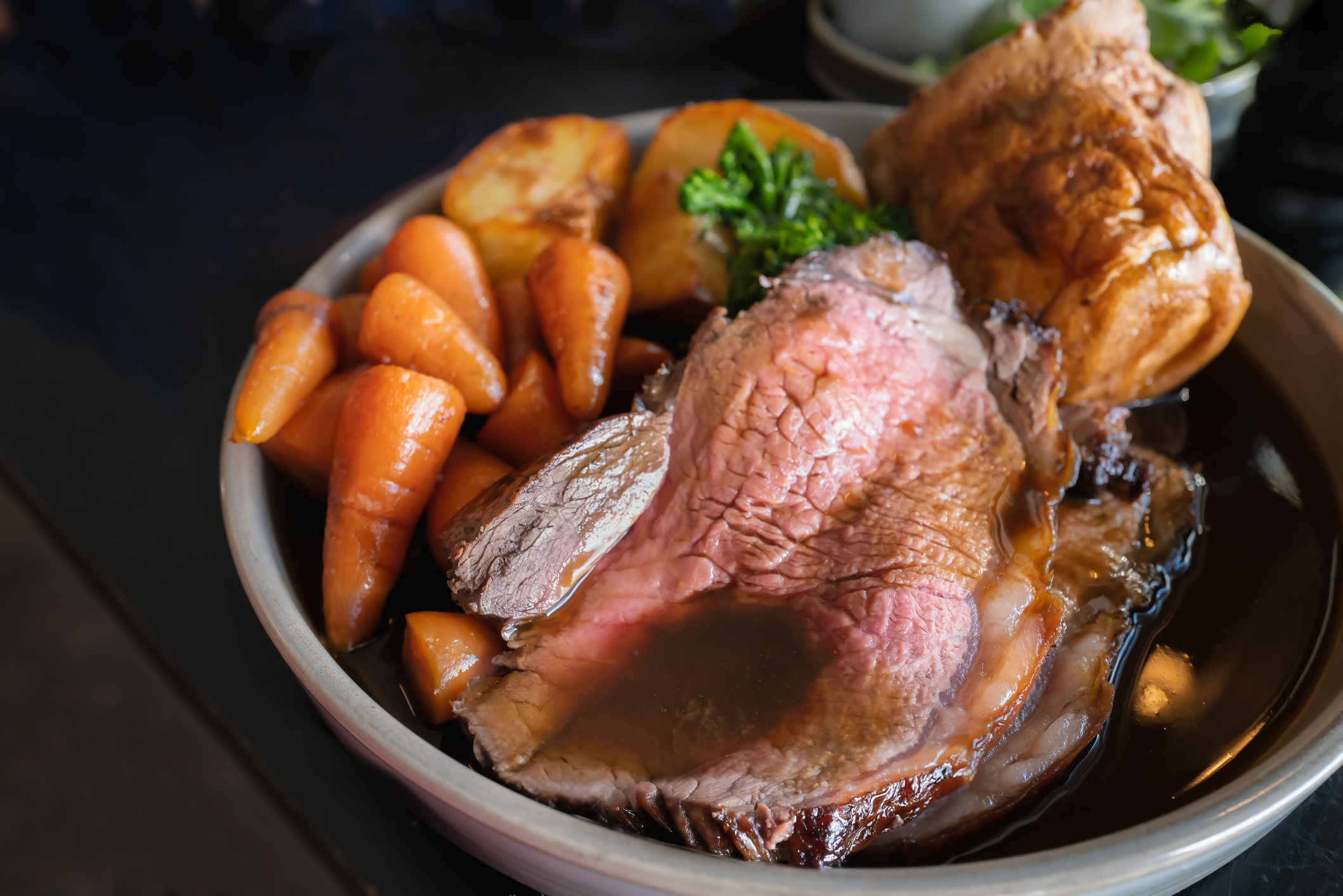

Have you ever wondered what are the most popular Christmas foods to have at the dinner table? Here's our list of the best Christmas foods to have on Christmas Day - and a few of them may surprise you.
From classic roast turkey to roast potatoes, indeed, some festive foods are much more preferred than others. As well as festive staples – such as pigs in blankets, parsnips, and Christmas pud – it turns out some of us even enjoy chips at our big feast, as well as Yorkshire pudding. Controversial, we know.
“The most important food to have on the Christmas dinner table is food you love. If you hate sprouts, don’t have them! If the kids want ketchup rather than gravy – what’s the harm in letting them? Don’t have anything on the table you don’t enjoy and look forward to in a meal,” says Caroline Hartley from The Happy Food Kitchen.
“The only rule is that Christmas dinner should be delicious to you – I have personally never eaten turkey on Christmas Day! In fact, I have rarely had a roast, preferring something like a really delicious fillet of fish and baby vegetables, or even making an Asian feast one year. Remember too you can make some of the sides and freeze them rather than cooking them on the day to save time.” You could even take inspiration from different Christmas food traditions around the world for your Christmas meal this year.
Most popular Christmas foods
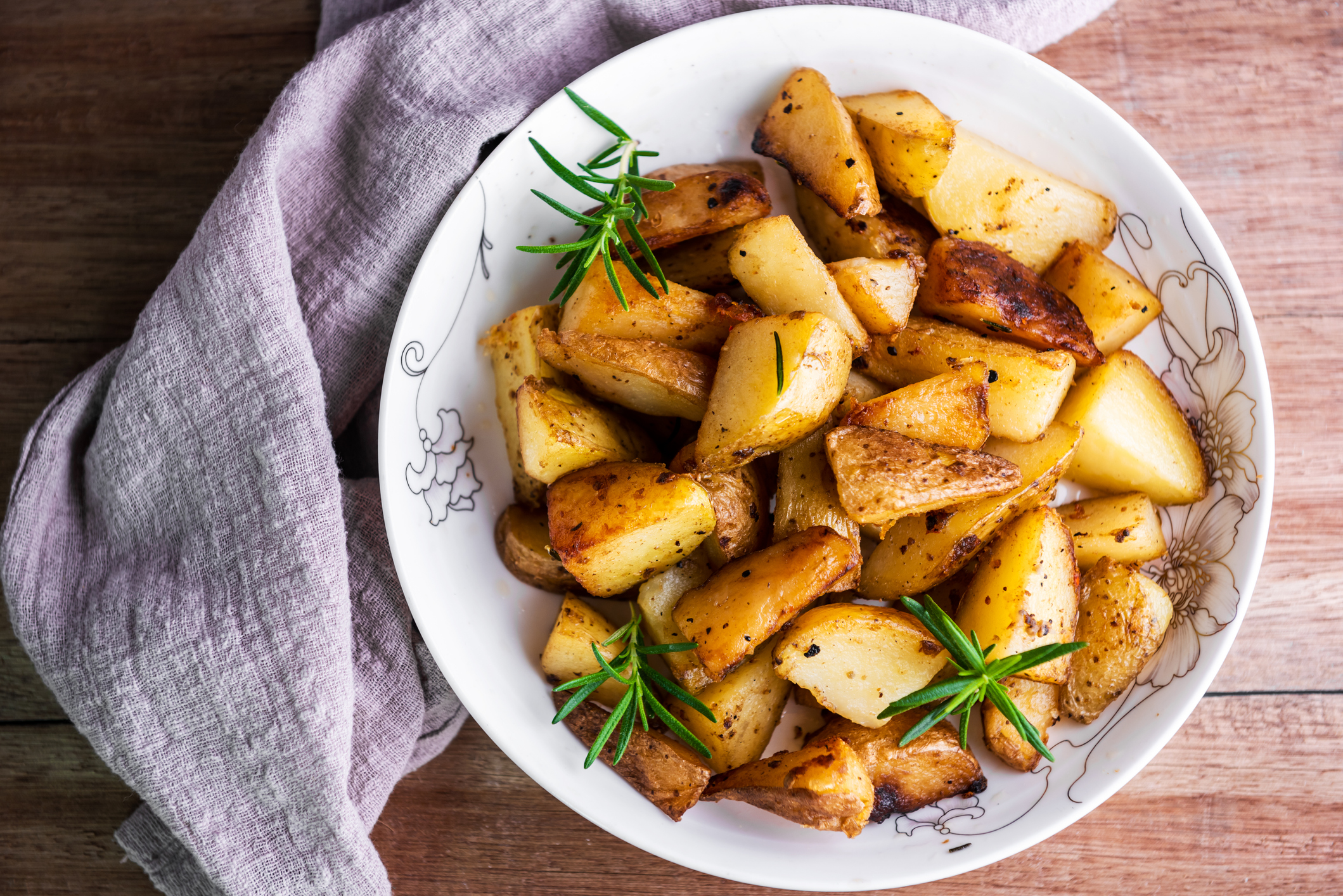
Roast potatoes are in at number one – we'll be having at least three. OK, make that five…
1. Roast potatoes
Why so popular? Of all the trimmings, a roast just simply would not be a roast without the icon of side dishes, and you put a perfect roast potato firmly in the top spot – ahead of even the turkey. And we concur. Soft and fluffy on the inside, crispy and crunchy on the outside, whether you go festive trad/slightly posh by cooking them in goose fat, or go for the (somewhat more heart-healthy option) of roasting them in olive oil, the humble spud is the undisputed King of Christmas dinner.
How to serve: Jazz things up with some crushed cloves of garlic, sprinkle over some fresh rosemary or thyme, and go a little Italian with a dash of oregano and some lemons. You could also mix other root veg in with them (saves on oven space and washing up) - try adding swede and a festive parsnip (though make sure they’re pretty chunky or add them in later in the cooking process as they will take less time). Or, just put them in sizzling oil and add salt. Because sometimes the simple things are the best.
Get the recipe: Roast potatoes
GoodtoKnow Newsletter
Parenting advice, hot topics, best buys and family finance tips delivered straight to your inbox.
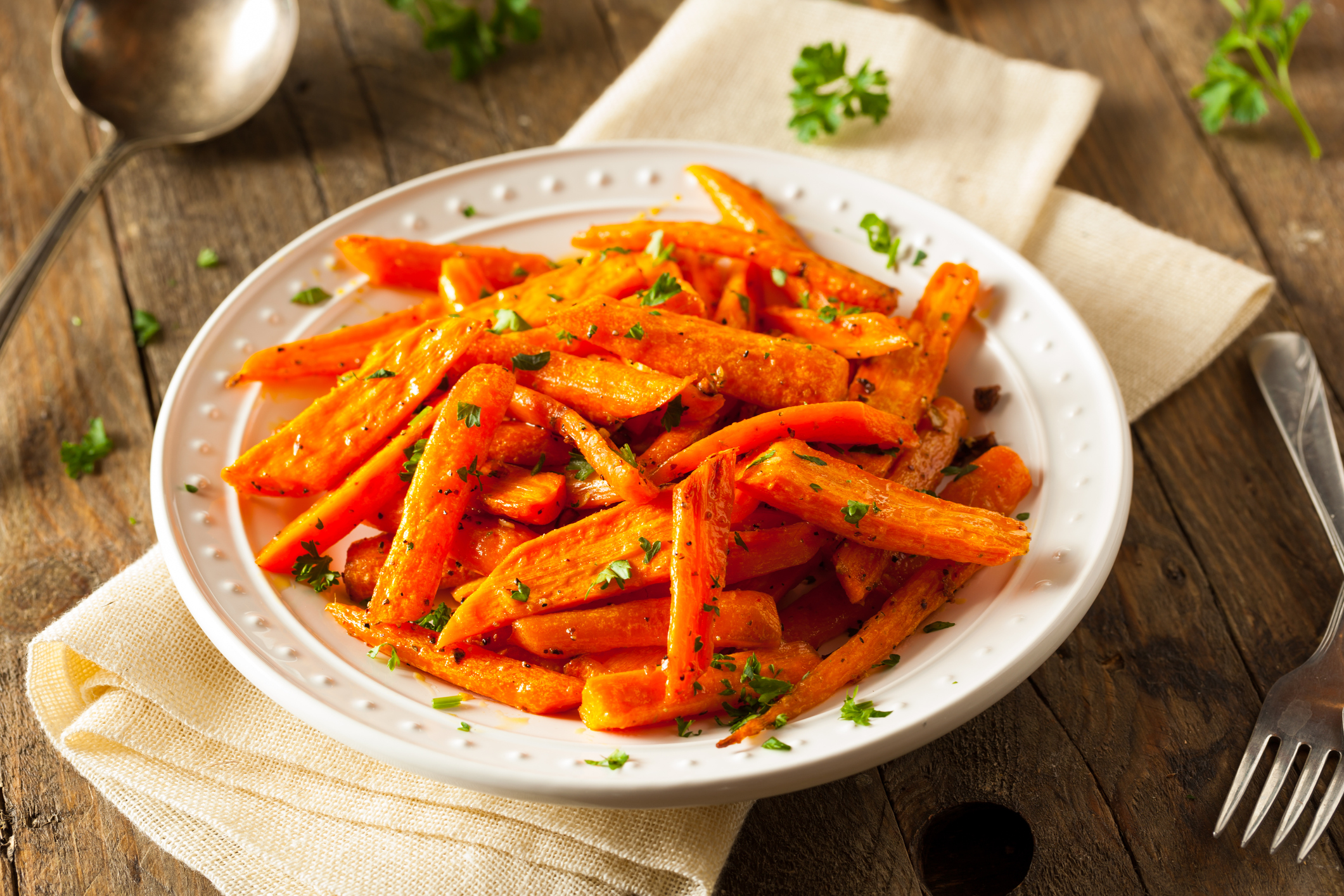
The humble carrot is in at number 2 – even beating turkey and Christmas pud
2. Carrots
Why so popular? We all love a carrot, the most crowd-pleasing of veggies – though we’re a little surprised they’ve ranked quite this highly on the Christmas food list. They’re certainly one of the most important veggies on the festive dinner plate, though, bringing colour as well as flavour. And, for the big meal, it’s worth making them a star (so, no, over-boiled, soggy versions have no place on a festive table, folks).
How to serve: Eschewing your basic carrot for a posher version like Chantenay and cooking them whole is a nice touch at Christmas (saves on prep, too). You could roast them, maybe alongside your parsnips and they work well with sticky sweet marinades like maple syrup, or honey. This recipe from the Hairy Bikers makes great use of an under-used spice, caraway seeds as well as butter and honey to give them a lovely glaze - because what in life isn’t made better with the addition of butter and honey?
Get the recipe: Gordon Ramsay honey-glazed carrots
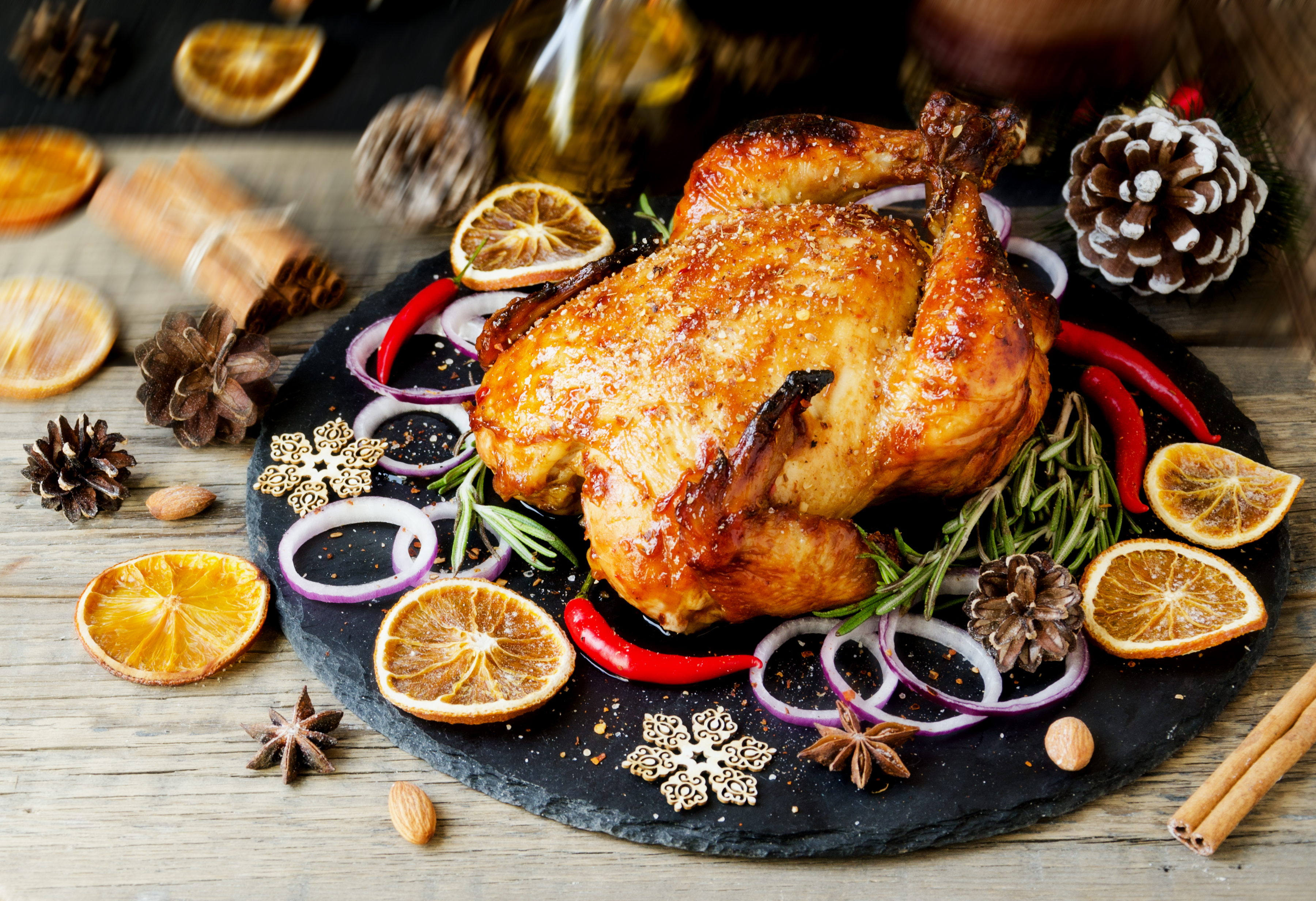
The central star of a traditional feast, turkey is third on the list
3. Turkey
Why so popular? Well, it is the most festive meat of all the meats, the crowning glory of Christmas dinner tables up and down the land. While most of us don’t regularly tuck into a turkey dinner, come December 25th, 76% of households get stuck into one of the 10 million birds sold. One of the appeals is they feed a lot of folks, for those of us who have a lot of people to cater to, and it’s something different from the everyday. And so long as you know how to cook a turkey properly and serve with a very good gravy, it tastes very fine too. If budget allows, it’s worth investing in an organic, free-range bird from a small, local producer, because there will be a huge difference in taste and flavour.
How to serve: Because of the size of a turkey and the cooking time involved, it can easily dry out, so it needs a lot of care in the cooking process. Cover it in butter or streaky bacon, put a delicious stuffing, like the one in the below recipe, into the cavity, and make good use of flavours like lemon and garlic. If space allows, take your bird out to the table as the crowning glory, dressed with fresh herbs and surrounded by your roast veggies.
Get the recipe: Gordon Ramsay turkey
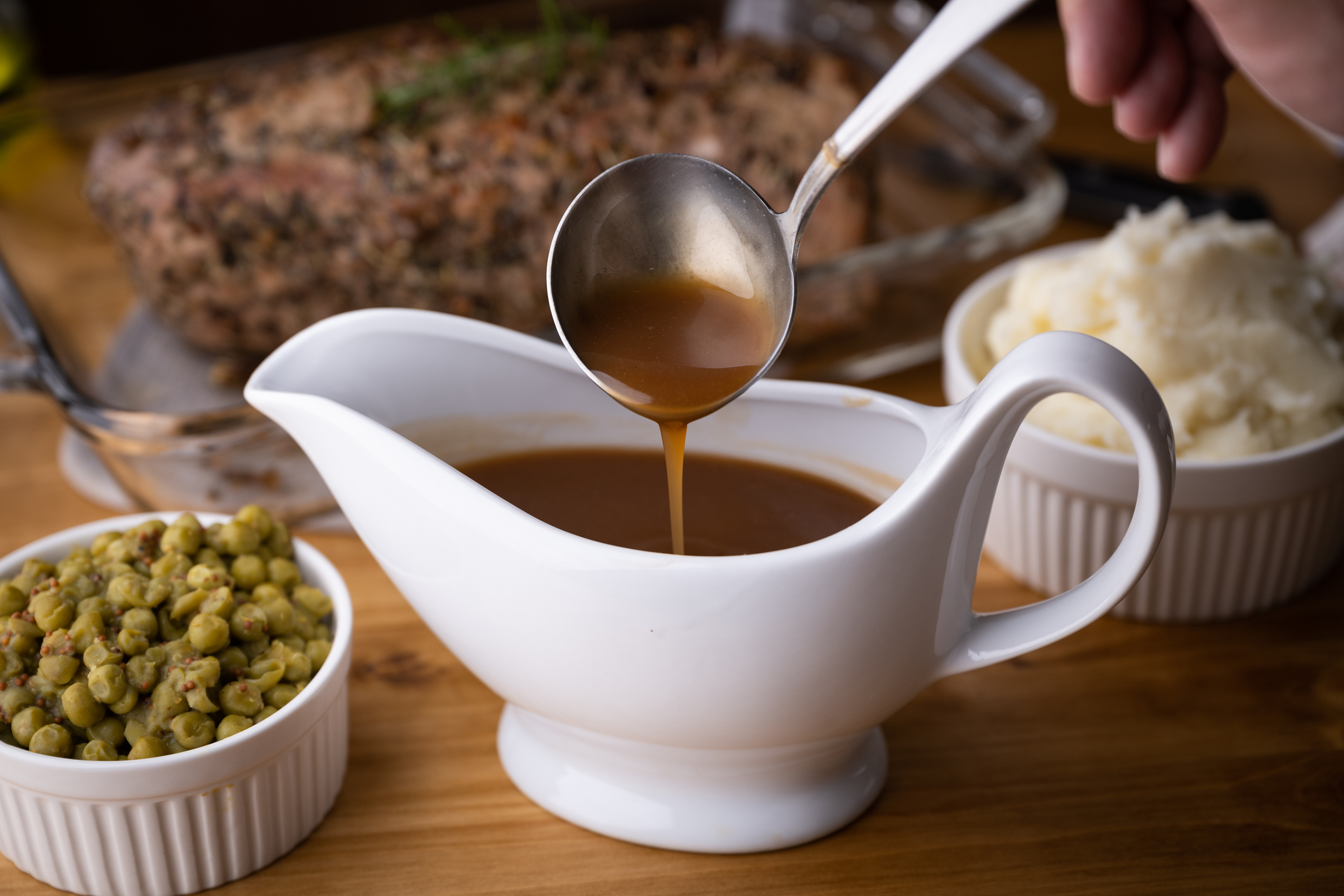
A roast would never be complete without a generous pouring of proper good gravy
4. Gravy
Why so popular? Much like the potatoes, a roast wouldn’t be a roast without lashings of thick, juicy gravy. Whether it’s a veggie version to add moisture to a nut roast, or one made with meat juices, it’s one of the trickiest parts of the meal to do well, getting the right thickness and taste, just at the time when all the other parts of the meal start coming together.
How to serve: All you really need is the meat juices, stock and some cornflour to thicken, like in this recipe below, though there are other flavours that work well – try splashing in some of that old bottle of red plonk you have lying around (don’t waste your best stuff on cooking!), add a few dashes of Worcestershire sauce, or some people even swear by adding a spoonful of Marmite for that umami flavour. You can also throw in crushed garlic cloves from your roast veg pan, some fresh herbs and a bay leaf, just strain the mix afterwards and serve in your finest gravy boat or jug. Just make plenty as you’re almost certain to be asked for seconds.
Get the recipe: How to make gravy
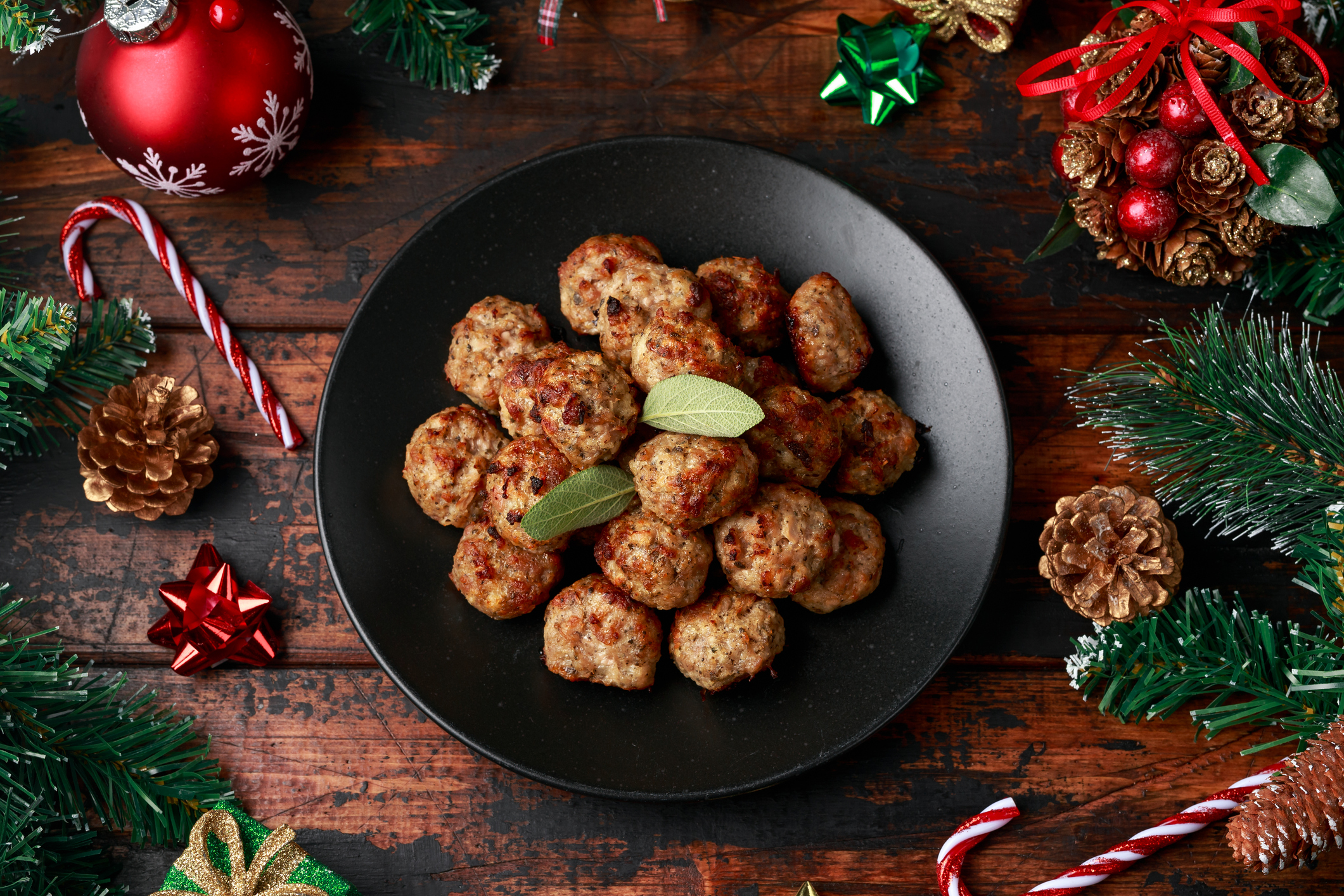
A classic sage and onion stuffing is the perfect partner for turkey, chicken or even roast pork
5. Stuffing
Why so popular? An essential part of a festive dinner table if turkey or chicken are your meats of choice, it’s essential for stuffing the bird, but also great oven roasted and crispy as a side dish. It tends to feel special and significant because most of us don’t bother with it for a regular Sunday roast. There’s a heck of a lot you can do with stuffing, and it can even be promoted to a central role in your Christmas meal, especially for vegan and veggie folks (so long as you don’t stick any sausage meat in there, of course).
How to serve: Oh, the choices. From the classic sage and onion below, you could try a meaty sausage and apple stuffing (that would pair beautifully with pork as well as turkey) or how about apricot and hazelnut? Olives work well in stuffing too, especially for roast lamb, and throwing in some pancetta works a treat. Breadcrumbs are an essential part of a stuffing, so you could swap regular bread for sourdough or ciabatta as a special twist. Bake and serve straight from the dish, or roll into balls and serve on a platter with pigs in blankets, and your dishes of cranberry and bread sauce.
Get the recipe: Sage and onion stuffing

If we're honest, we'd probably be happy just with a plate of these for Christmas dinner
6. Pigs in blankets
Why so popular? If these hadn’t been in the top ten, we’d have eaten our Christmas hats. One of the most fought-over foods on the dinner table, they pair wonderfully with the turkey and stuffing, and would work equally well with roast chicken or pork. Get as good quality sausage as your budget allows (it’s one of the top things we’d suggest spending a little extra on), and streaky bacon is best, though you could use pancetta instead, or back bacon, which has a much lower saturated fat content (not that most of us worry about that sort of thing on Christmas day).
How to serve: Display them on a serving platter with stuffing balls and other accoutrements like your sauces, for the Christmas dinner. Pigs in blankets are also a wonderful festive canape, served on cocktail sticks and decorated with sprigs of fresh herbs like rosemary, and with dips like Dijon mustard or even a sweet chilli sauce on the side.
Get the recipe: Pigs in blankets
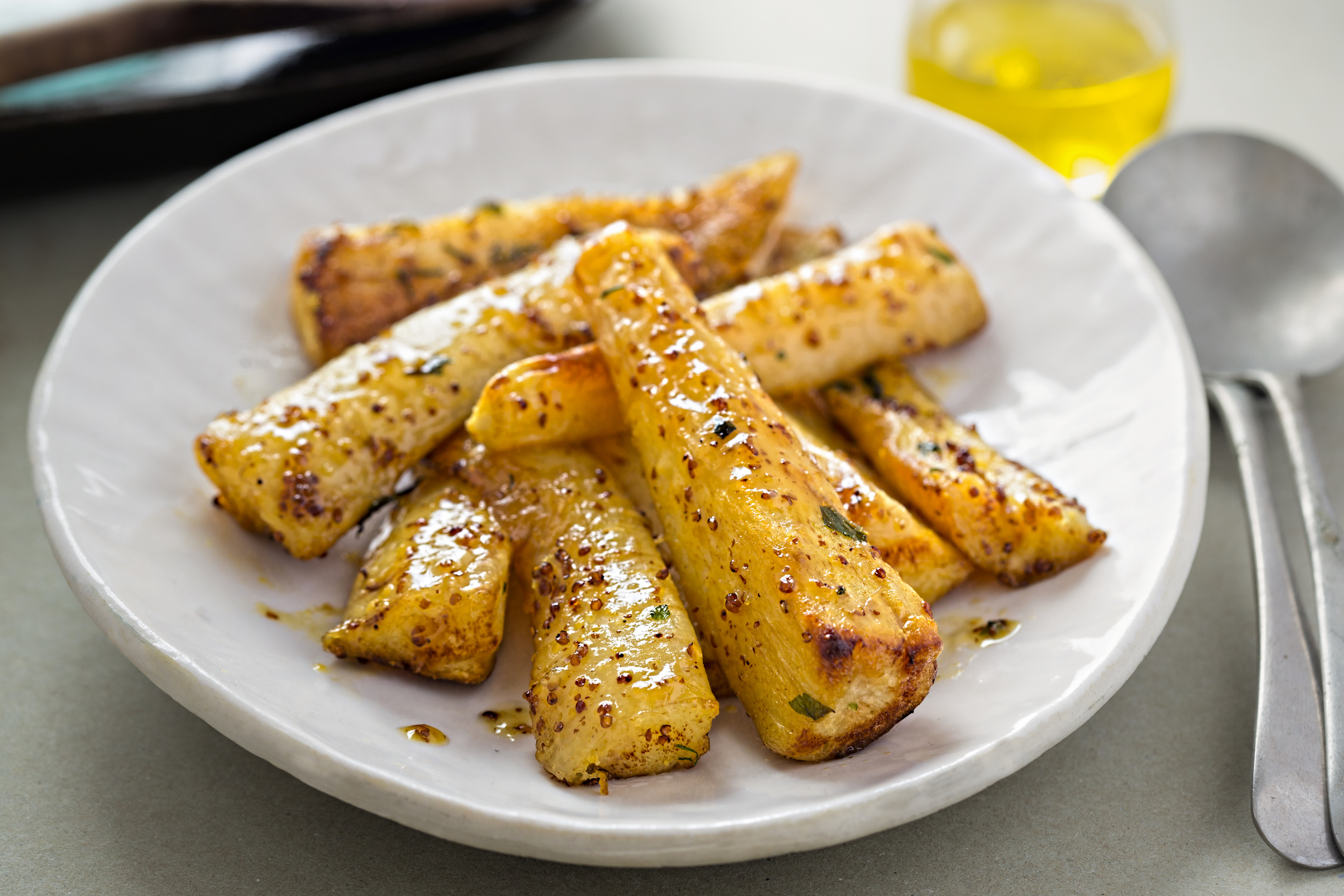
The sweet root veg is a popular staple of Christmas dinner
7. Parsnips
Why so popular? After the all-conquering roast spud, the parsnip is our favourite festive root and a crucial part of the Christmas meal, thanks to their distinctive, slightly sweet taste. You could cook and serve them with the potatoes, just be sure to cut them chunkily and don’t cook the thinner bottom part for as long as they do have a tendency to burn – and we don’t need that drama in the Christmas kitchen.
How to serve: Like carrots, parsnips pair beautifully with sweet flavours like honey and maple syrup and benefit from a generous amount of seasoning (especially pepper, so don’t be shy). They also work well baked with grated Parmesan, which would be particularly wonderful paired with roast beef. To do something a bit different, they also work beautifully in a creamy gratin.
Get the recipe: Honey roast parsnips
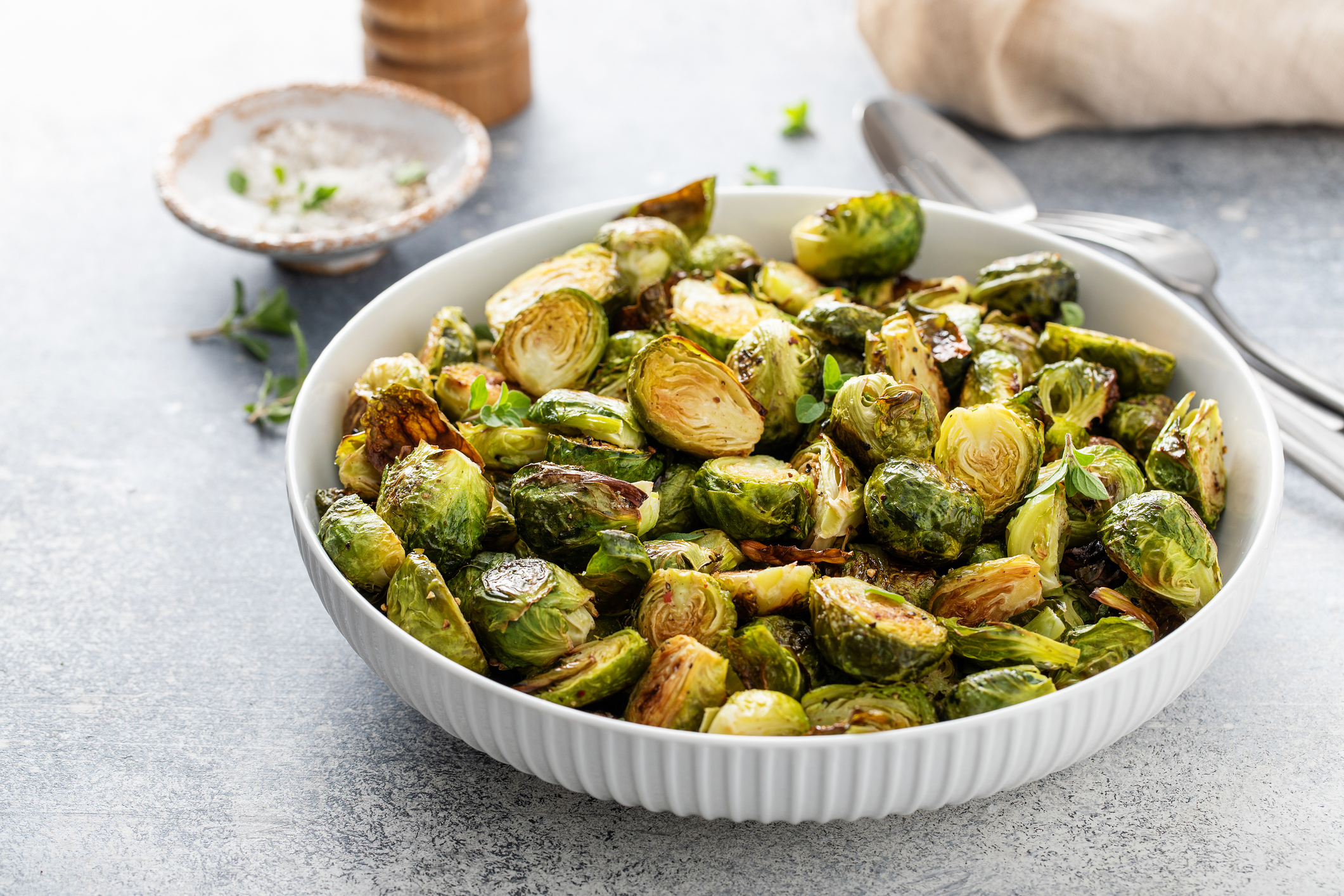
They're a divisive veg but, paired with pancetta and chestnuts, even the naysayers won't be able to resist a festive sprout
8. Brussels sprouts
Why so popular? The Marmite of veggies, however you feel about them (and clearly they’ve made the top ten, so a lot of you are fans) they are an undisputed star of Christmas dinner. Looking to jazz them up a bit for that extra punch of flavour? Check out Gordon Ramsay's recipe for brussel sprouts with pancetta.
How to serve: You could just serve them simply, steamed or boiled (do not over boil though, please!) with a drizzle of butter and maybe a pinch of nutmeg, or make them super festive with the addition of pancetta or, for veggies, some crumbled roast chestnuts. Oh and it’s of course essential to keep any leftovers for a Boxing Day bubble and squeak
Get the recipe: Gordon Ramsay’s Brussel Sprouts
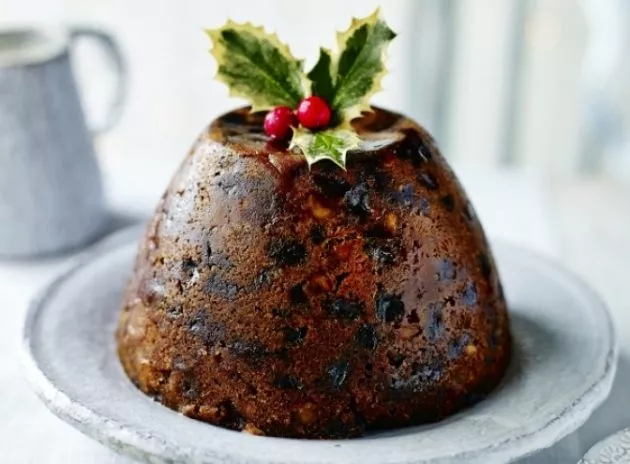
Topped with berries, from a recipe by Mary Berry, the ultimate Christmas pud
9. Christmas pudding
Why so popular? An icon of the dinner table, a classic Christmas pud quite rightly made the top ten. Sure, some folk prefer trifle, or a yule log, or just to go straight ahead to the cheese board, but it’s a once-annual affair and it's worth being revered and celebrated. Dried fruit, mixed spices, nuts, booze, it really is Christmas in a bowl. Make it as far ahead as time allows (that’s why ‘stir up Sunday’ is always in November) for the flavours to develop.
How to serve: It needs centre stage, it needs a sprig of holly, and it needs drenching in booze and setting a-light. And then it needs a good dollop of brandy cream, or clotted cream, or ice cream, depending on your particular persuasion. And then you will need a lie down and a nap while someone else does the dishes.
Get the recipe: Mary Berry's Christmas Pudding
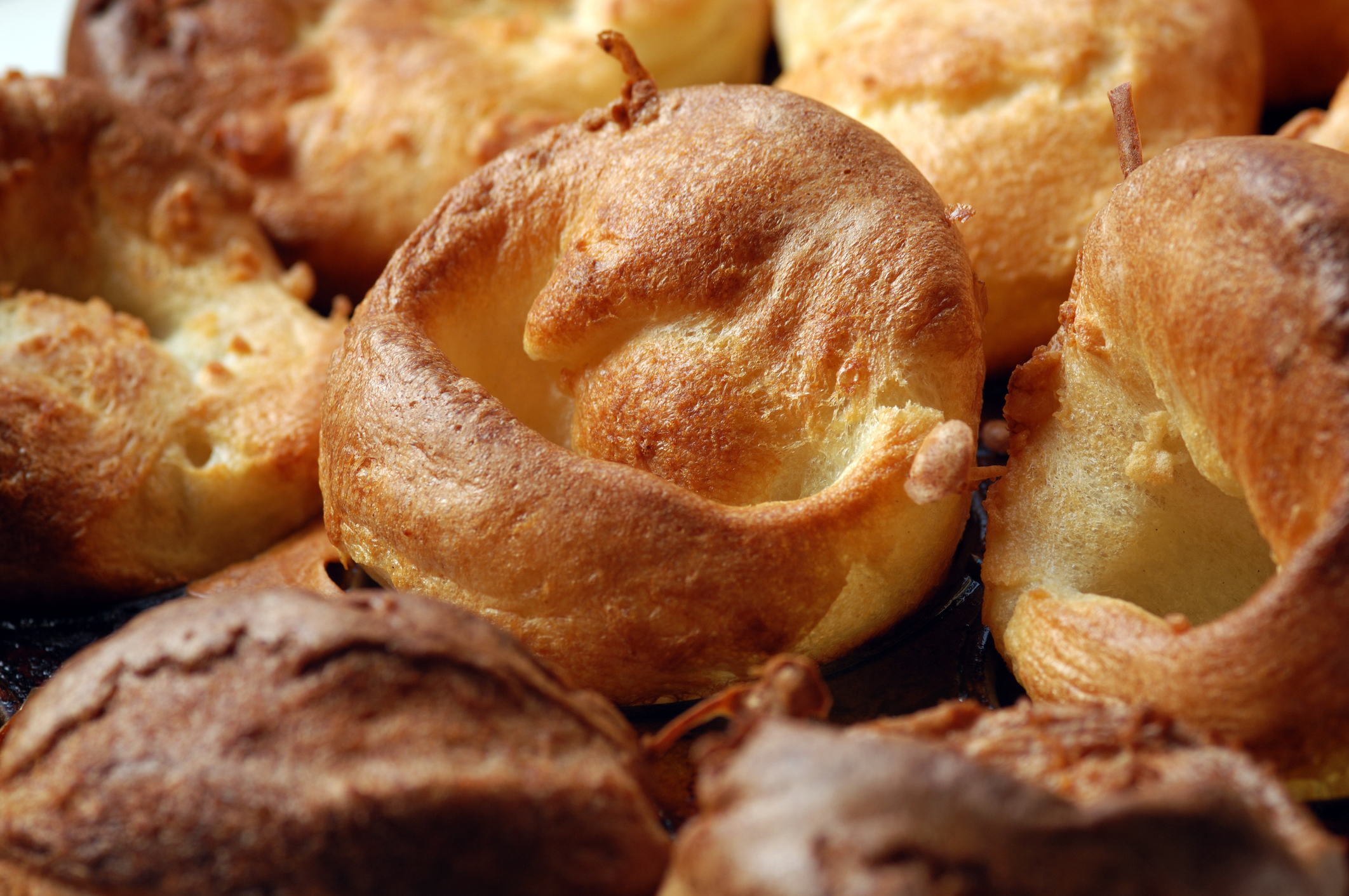
Not everyone thinks they belong on a Christmas dinner, but any reason to eat fluffy Yorkies is a good reason
10. Yorkshire pudding
Why so popular? A controversial one here, as some would say there’s no place for a Yorkshire on the Christmas roast whereas others, clearly, disagree. And as we all love one on a regular Sunday, why not throw them into the festive version? It’s good news for vegetarians, too. “I love that Yorkshire pud is on the list – I make veggie roasts and the best thing is you can have Yorkshires and any of the sauces for meats like mint or cranberry too,” says Caroline Hartley. Ideally, if it’s not one too many tasks, make your own rather than relying on Aunt Bessie.
How to serve: The tricky thing when there’s so much else going on in the oven, is to avoid sinking or soggy Yorkshires - remember the golden rules of getting the oil very hot and not opening the oven til they’re done. Luckily though, they won’t need to go in until the turkey is resting. Serve them in a wide, shallow dish, topped with sprigs of fresh herbs like rosemary or sage.
Get the recipe: Yorkshire puddings
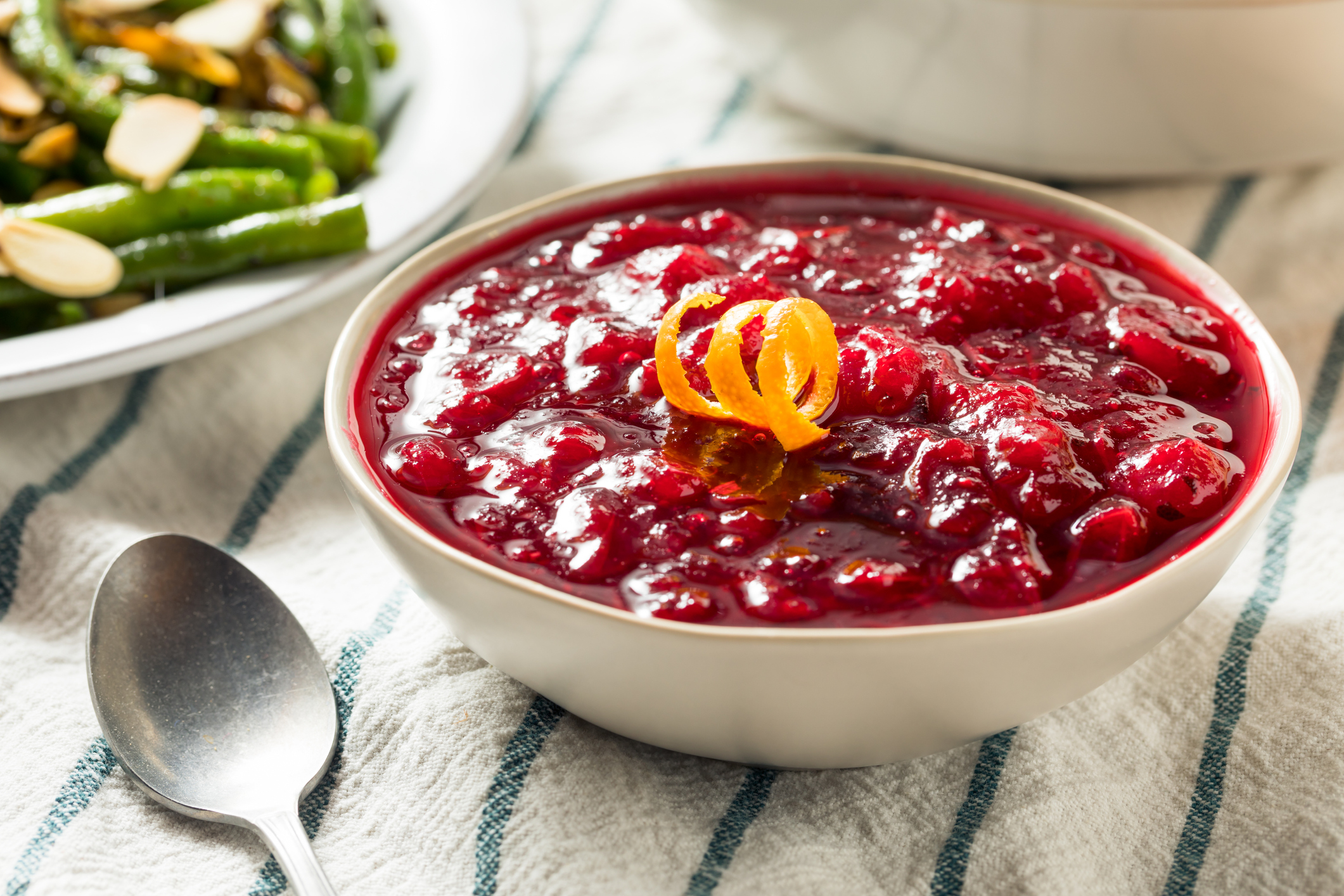
Sweet, tart, vibrant, and a very good friend to your roast turkey or chicken
11. Cranberry sauce
Why so popular? Deliciously tart and sweet, it's a staple condiment for a turkey or chicken roast and is particularly festive because we don’t tend to think to serve it at any other time of year (hands up who still has half a jar from last year at the back of the cupboard). Making your own is worth the effort though, for both taste and satisfaction, though we recommend doing this ahead of time as you won’t be needing an extra task like this on Christmas morning. It’ll fill the whole house with festive smells too. Delightful.
How to serve: Depending on how many people you’re serving, add it around the table in glass ramekin dishes with a small serving spoon, for some pops of festive colour. Increasing the recipe quantities, it could be a lovely gift to others ahead of the big day, stored in decorated jam jars wrapped with festive ribbon.
Get the recipe: Cranberry sauce
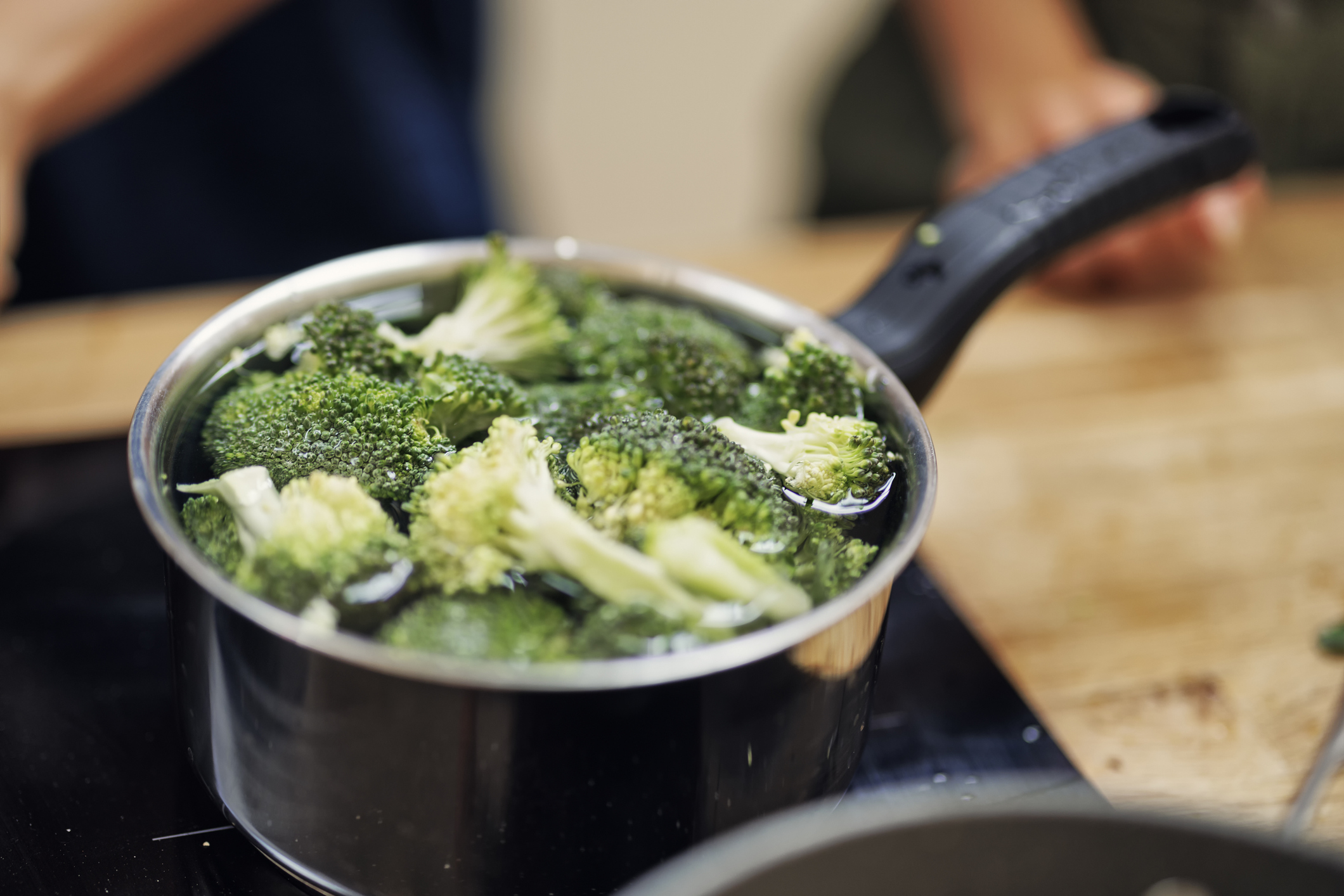
Make your Christmas broccoli shine by cooking it with Parmesan and pistachios
12. Broccoli
Why so popular? It’s not quite as festive as the likes of carrots, parsnips, and sprouts, but broccoli is a crowd-pleaser, kids love it, and it will give the family a nutrient boost over what is not, generally, the most vitamin-filled time of the year. And this is the time to do something a little extra special with your broccoli, rather than the usual boiled-on-the-side offering.
How to serve: If you can’t go the extra mile with your veg recipes at Christmas, then when can you? Stir fry it with pine nuts, garlic, and lemon, add to a gratin, mix it in with your cauli cheese, or try this delicious roasted broccoli with parmesan and pistachios recipe – we’d eat that as a meal in itself, personally.
Get the recipe: Roasted broccoli
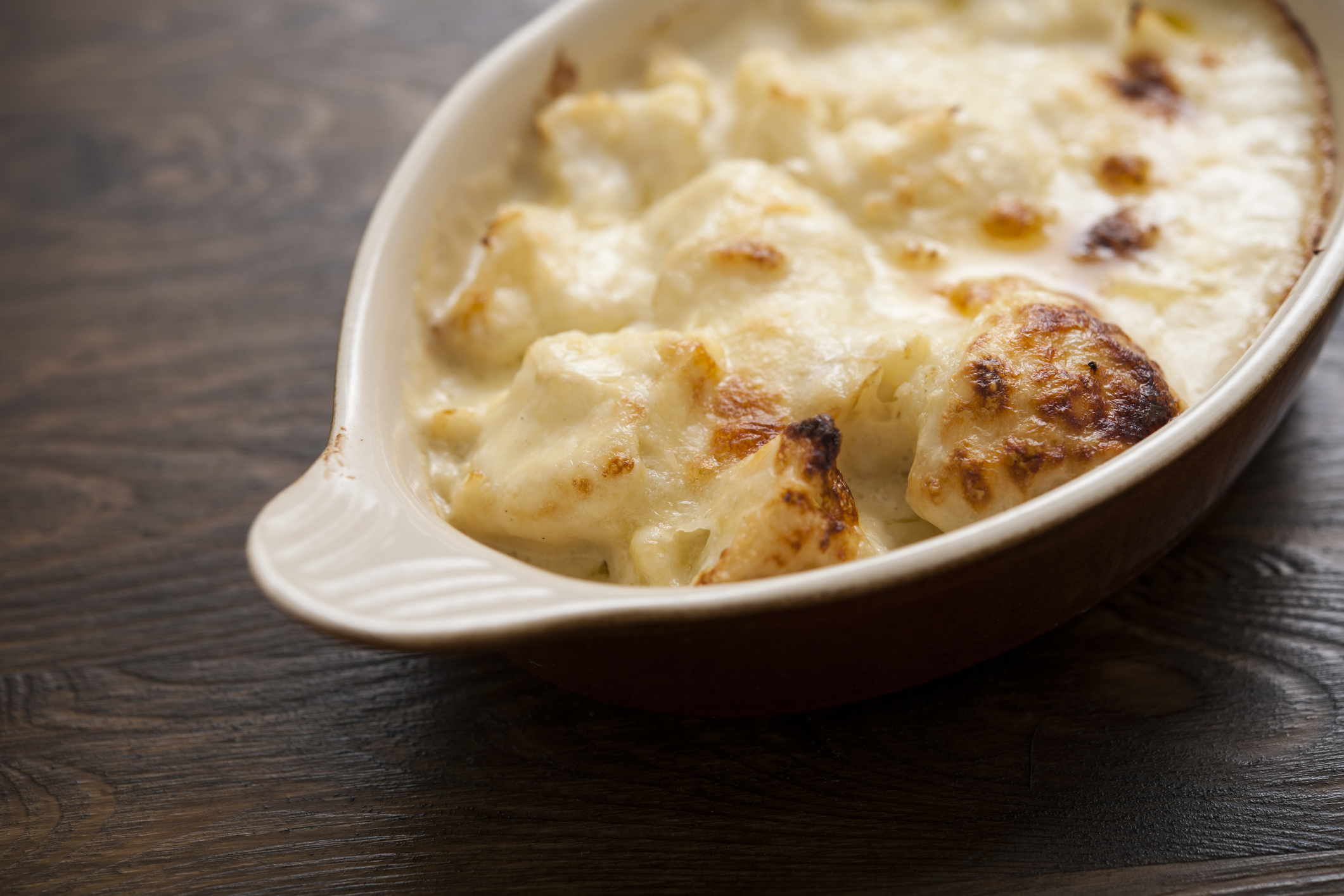
Because cauliflower cheese is always a good idea
13. Cauliflower cheese
Why so popular? Do you even need to ask? What isn’t to love about veggies cooked in a bubbling, toasted cheese sauce? Cauli cheese adds a different dimension of flavour and texture to any roast, from turkey to beef to a classic nut roast. It can even be the main event for non-meat eaters. “Cauliflower cheese is a fab make-ahead dish as who wants to be faffing about with cheese sauce on Christmas morning? It can just slot into the oven while the rest of your food is roasting and is a real treat,” says Caroline Hartley.
How to serve: No need to mess with a classic, though you could add some broccoli in with the cauli, a spoonful of mustard, and/or a pinch of nutmeg or even cayenne pepper for a stronger flavour. Try topping it with some bread crumbs mixed with Parmesan and herbs for more of a gratin and serve it looking all rustic, straight from the oven.
Get the recipe: Cauliflower cheese
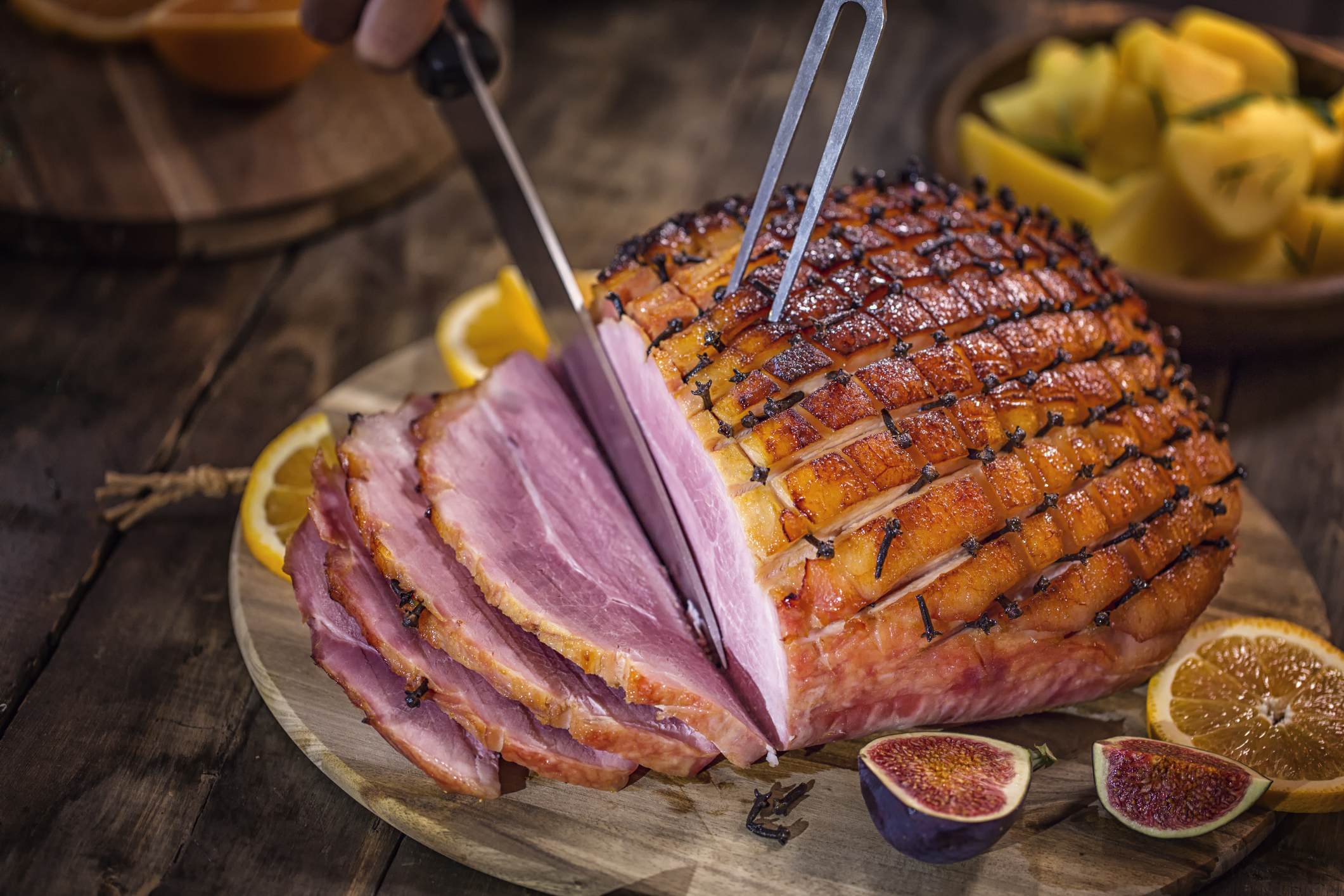
Add it to your dinner table, or wonderful as a cold cut for that Boxing Day buffet
14. Roast ham
Why so popular? A roast ham is a staple of Yuletide, beautifully complementing turkey as well as being a brilliant cold cut for evening sarnies or the Boxing Day buffet. Cooking your own is a satisfying labour of love, that involves boiling the ham before roasting it in the cooking liquor.
How to serve: It is complemented wonderfully by sweet flavours like maple syrup in the cooking process, to give it that delightful sweet glaze. Excellent with pickles (we like to pair it with mango chutney - try it, promise it works) or with a strong English mustard and a good dollop of mayo. Oh and a crusty white loaf. And chips. Because everything is made better by crust bread and chips. Serve the whole ham on a platter, with some of it thickly sliced, and surrounded by the condiments.
Get the recipe: Gordon Ramsay honey roast ham or learn how to cook a ham with our step-by-step guide
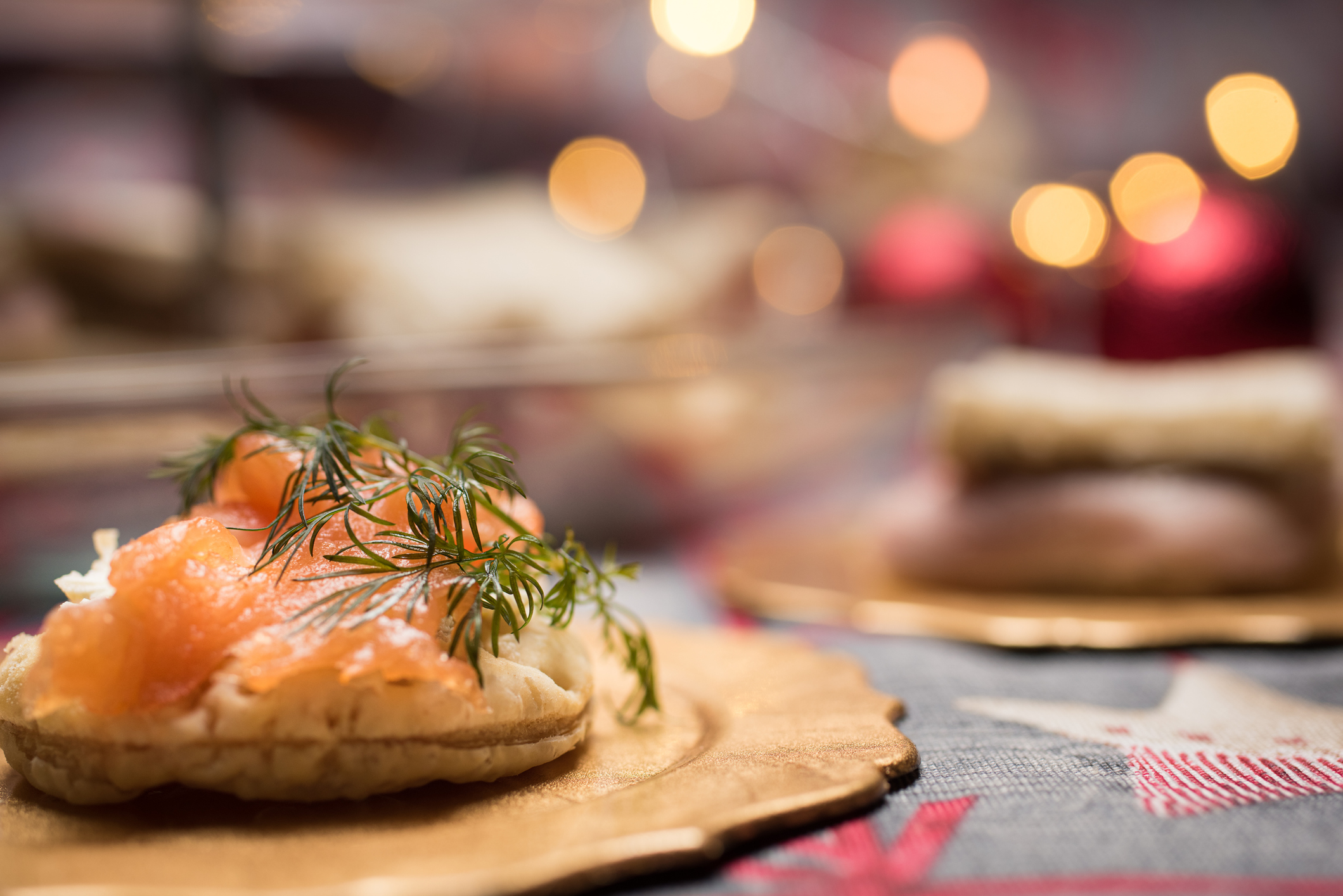
A treat of a starter on the big day, or as part of a festive buffet spread
15. Smoked salmon
Why so popular? It’s such a treat, it’s so versatile, and it’s the perfect posh starter for your Christmas lunch – getting the taste buds excitable and light enough so as not to get you too full for the food onslaught. Perfect just as it is with a squeeze of lemon, there are lots of other things you can do with your salmon, for the buffet, for canapes, for breakfast, we could go on…
There's an abundance of smoked salmon recipes you could try to add variety to your Christmas dinner spread. From salads to bite-sized salmon parcels, there's a good reason why smoked salmon ranked at number 15 on the most popular Christmas foods list!
How to serve: Where do we begin? Wrap it up into wheels with cream cheese and sprinkle with dill, as easy canapes, cook it up lightly with scrambled eggs and serve on some toasted sourdough for festive brekkie, or as an appetizer as part of a fish platter for the big meal. Serve with king prawns and perhaps some squid or cockles and mussels, or how about scallops or some smoked fish, and a bowl of mackerel pate? Check out the recipe collection below.
Get the recipe: Smoked salmon

Rare, juicy, and a great choice for those who don't rate a turkey dinner
16. Roast beef
Why so popular? For all those turkey refusers out there, roast beef is the favourite option for the festive lunch centerpiece and we get why – it’s the king of Sunday roasts, the best pairing for a Yorkshire pud, and a delight with a dollop of horseradish sauce on a Boxing day butty.
How to serve: Choose your cut of meat well - topside is the most popular choice, but, for a special occasion, you could order beef ribs from your butcher, and serve with a rich port and Stilton gravy. It’s also wonderful roasted with flavours like thyme and mustard powder, or just simply done with salt and pepper. Or you could even turn your joint into a beef Wellington. Whatever you do, don’t overcook the meat. It’s all down to personal preference, but, really, it’s the most tasty if still a little pink in the middle. Serve at the table, surrounded by your roasted veg.
Get the recipe: Roast beef
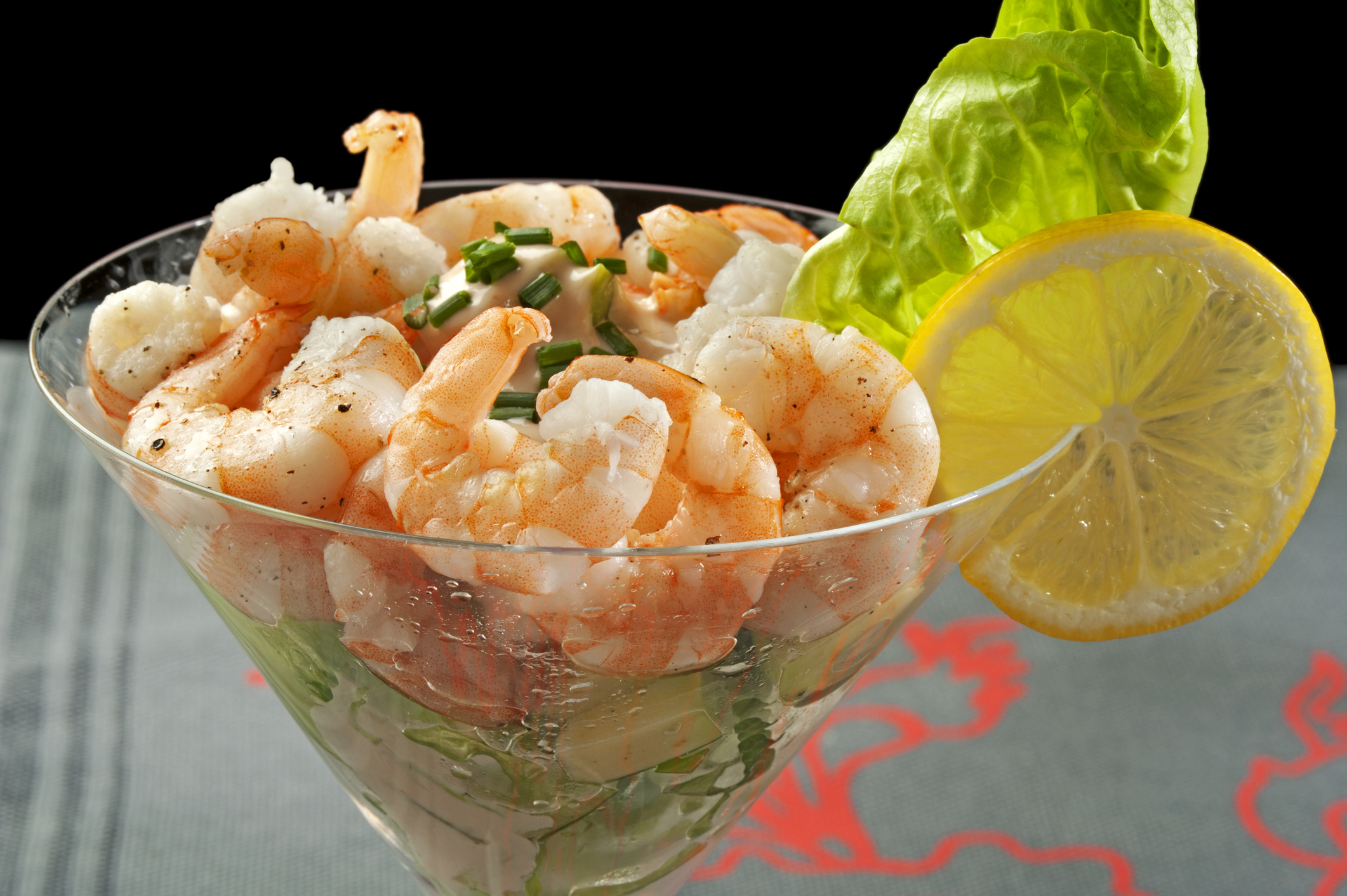
Not much beats a retro prawn cocktail as a festive starter
17. Prawns
Why so popular? A prawn cocktail is an icon of starters and more than worthy of a spot at your Christmas dinner feast, though prawns of any fashion are generally a big, versatile hit all over the festive season.
How to serve: Channel the Seventies with a Marie rose sauce, and serve in half an avocado or, if retro classics aren’t so much your bag (and if not, why not?), try shallow frying them in garlic (and we mean a lot of garlic), chilli and olive oil, for a tapas-style gambas pil pil. They work brilliantly with smoked paprika and chorizo, too. Splash out on king prawns if you can, as they feel way more special than those little tiddlers, not to mention tastier. Check out the recipe collection below.
Get the recipe: Prawn cocktail
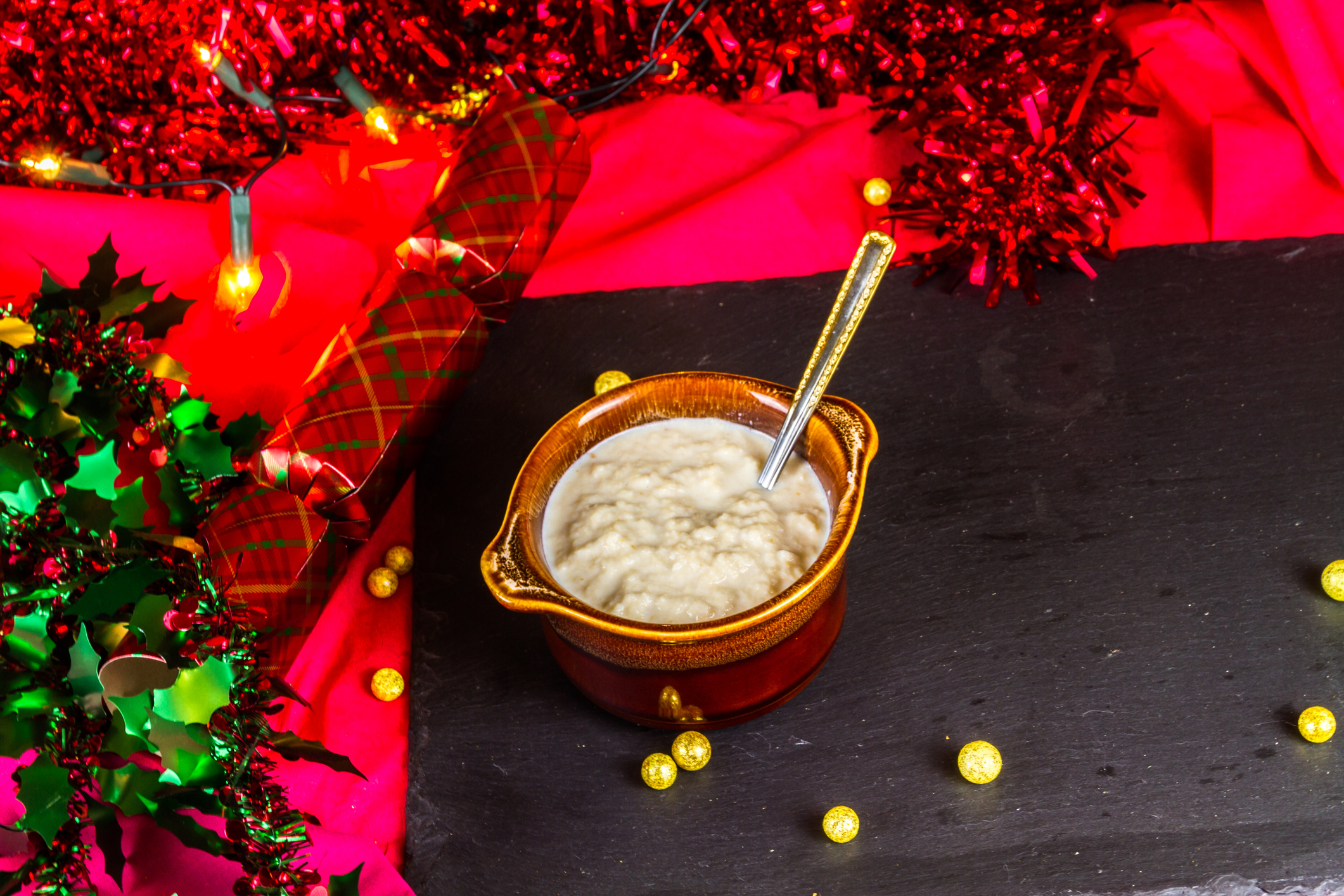
Creamy, comforting homemade bread sauce made it to number 18 on the list
18. Bread sauce
Why so popular? It was beaten by its Christmas condiment partner, the cranberry sauce, but, for many of you, bread sauce is still up there as a must-have part of the big meal on the big day. Like most things Christmas food-related, it’s rich, it’s creamy, it’s comforting, and you only really need a small dollop of it. It’s another of those elements that make the Christmas roast stand out from your regular Sunday roast (don’t know about you but we don’t whip one up on an average weekend), and it can be prepped in advance so it’s one less task on a very busy day in the kitchen.
How to serve: The classic sauce is made from cream, milk, onions, bay leaves, and, unsurprisingly, breadcrumbs, and sometimes you don’t need to mess with a classic. You can spruce it up though, with the addition of festive spices like cloves and nutmeg, and using ciabatta bread crumbs instead of a regular loaf. Serve it in a jug on a display plate with your other sauces, like cranberry and gravy.
Get the recipe: Bread sauce

Eggs for festive brunch, added in your yule log and trifle, made into canapés - is there a more versatile food out there?
19. Eggs
Why so popular? Not one we necessarily expected on the list of Christmas foods, but they’re up there as a key ingredient in lots of our festive sweet treats, whether that be in a chocolate yule log, or in our Christmas gingerbread man biscuits. They’re also obviously a perfect breakfast food over the festive period, whether that be a fried egg on the top of a Boxing Day bubble and squeak or paired with smoked salmon and bagels.
How to serve: How about an eggs benedict on Christmas morning, a special omelette, or even a kedgeree? Eggs also make for great canapes – go retro with a plate of devilled eggs – or add chopped boiled eggs to a plate of smoked salmon.
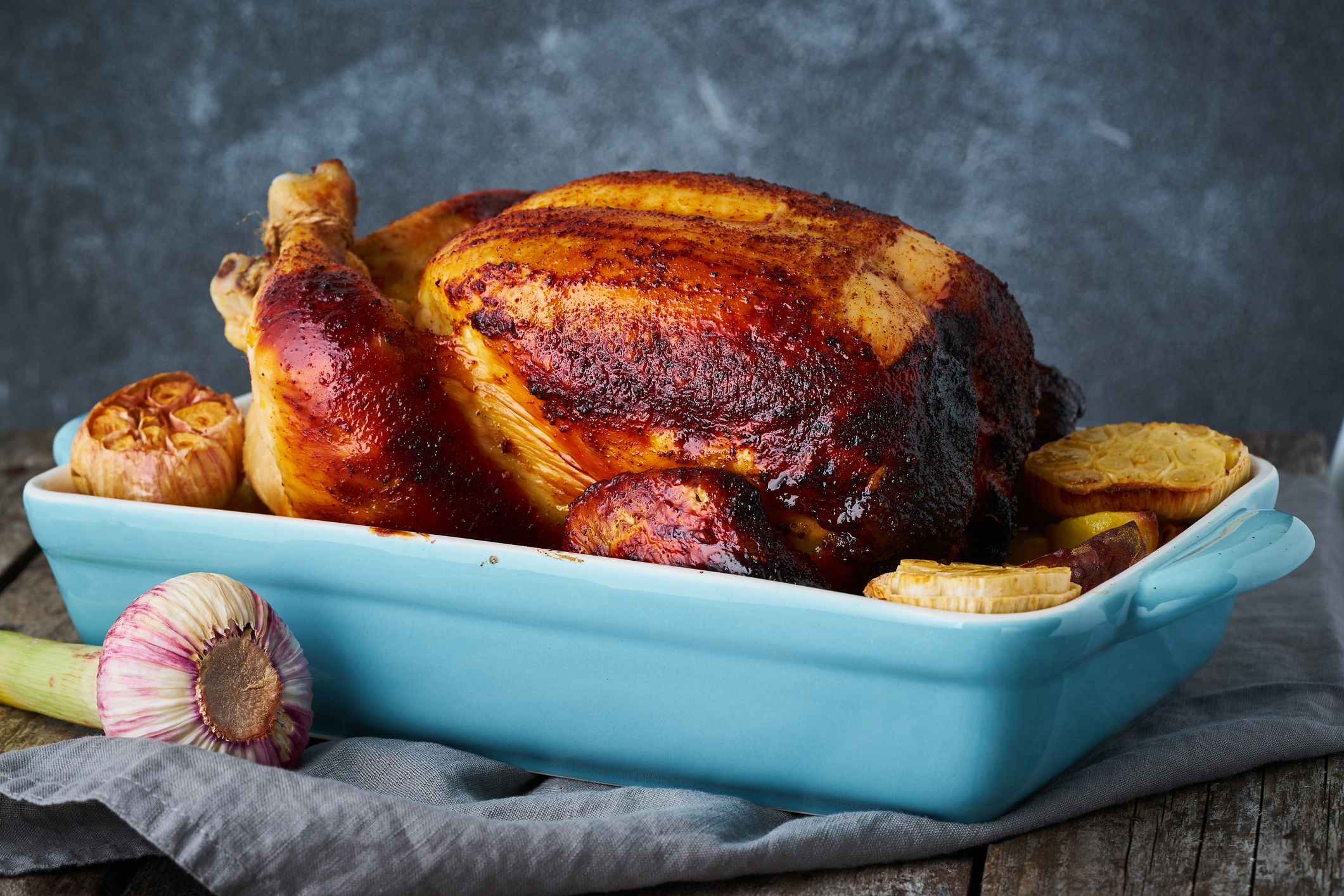
For smaller gatherings, a classic roast chicken is a delightful alternative, and works just as well with all the trimmings
20. Roast chicken
Why so popular? Because, sometimes, a turkey is too much to handle. If there’s only a few of you at the dinner table, you’ll be eating leftover fricassee for months to come, so a chicken is the ideal alternative – both more manageable and quicker to cook (and use less energy), and will avoid food waste in the process. Plus it’s arguably more tasty and succulent, and pairs just as well with all the traditional trimmings as its more substantial poultry cousin.
How to serve: Our recipe is the classic, flavoured with thyme, lemon and olive oil and, at Christmas, it’s essential to serve with a lovely herby stuffing on the side. Using sage and orange to flavour your bird is festive, too. Going leftfield, Spanish flavours like paprika, tomatoes and olives, or a garlic chicken (yes, you’ll need to use a whole bulb), brings a different twist. Carve at the table on a serving dish surrounded by your roasties.
Get the recipe: Roast chicken
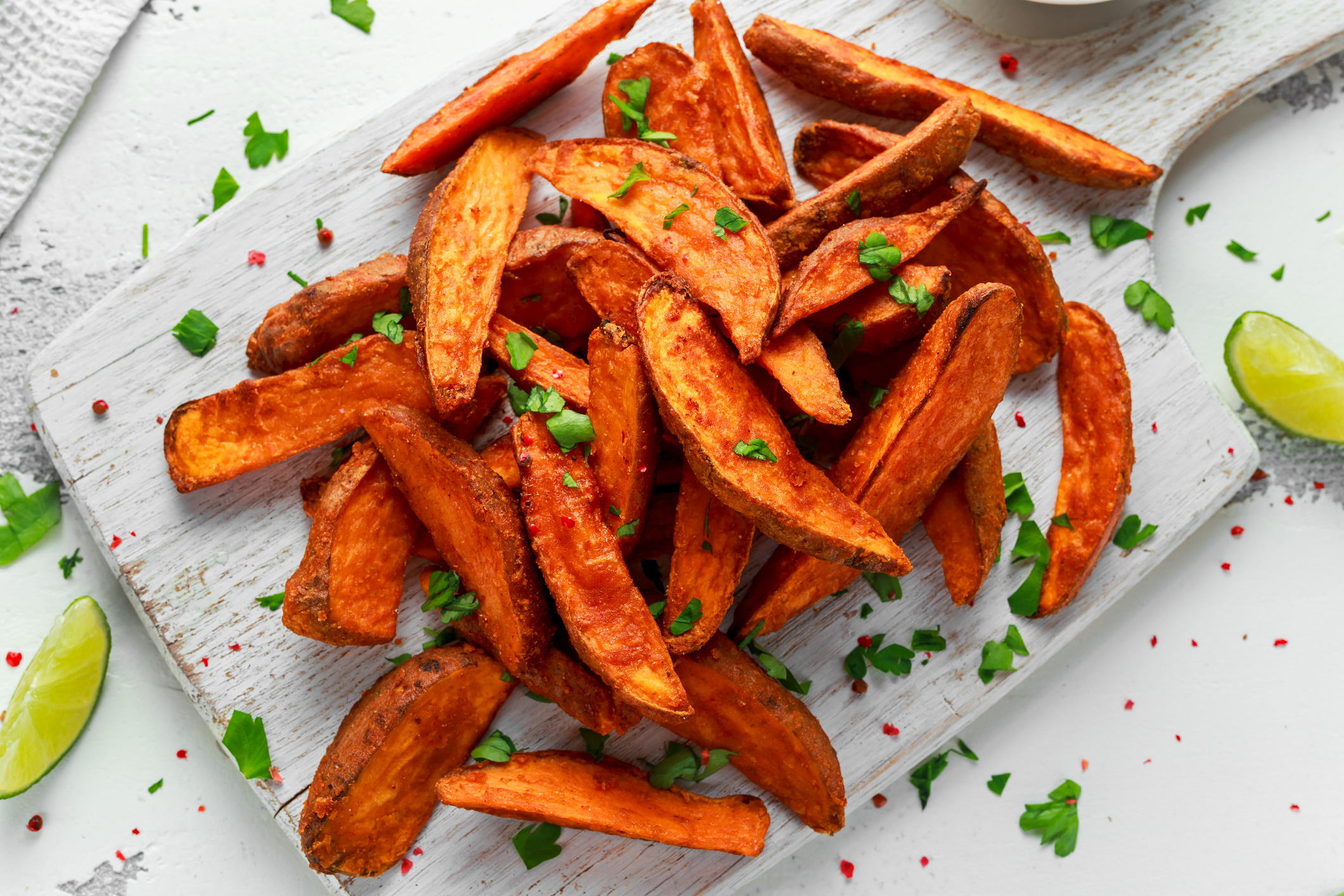
Not the most common of Christmas dinner veggies, the sweet potato is growing in popularity
21. Roast sweet potatoes
Why so popular? Not your typical Christmas veggie, sweet spuds are a great one to throw in the mix with the regular pots (not just because they taste amazing, but they give a hit of Vitamin A and fiber, nutrients a little lacking at the most wonderful time of the year). They add a great pop of colour to the table, too, and leftovers could be added to a hearty curry over the following days for a change from all that heavy Christmas meat.
How to serve: Make them feel extra special by cooking with garlic and grating with Parmesan to add some salty flavour to the sweetness, or by cooking in butter and sprinkling over dried rosemary.
Get the recipe: Roast sweet potato wedges
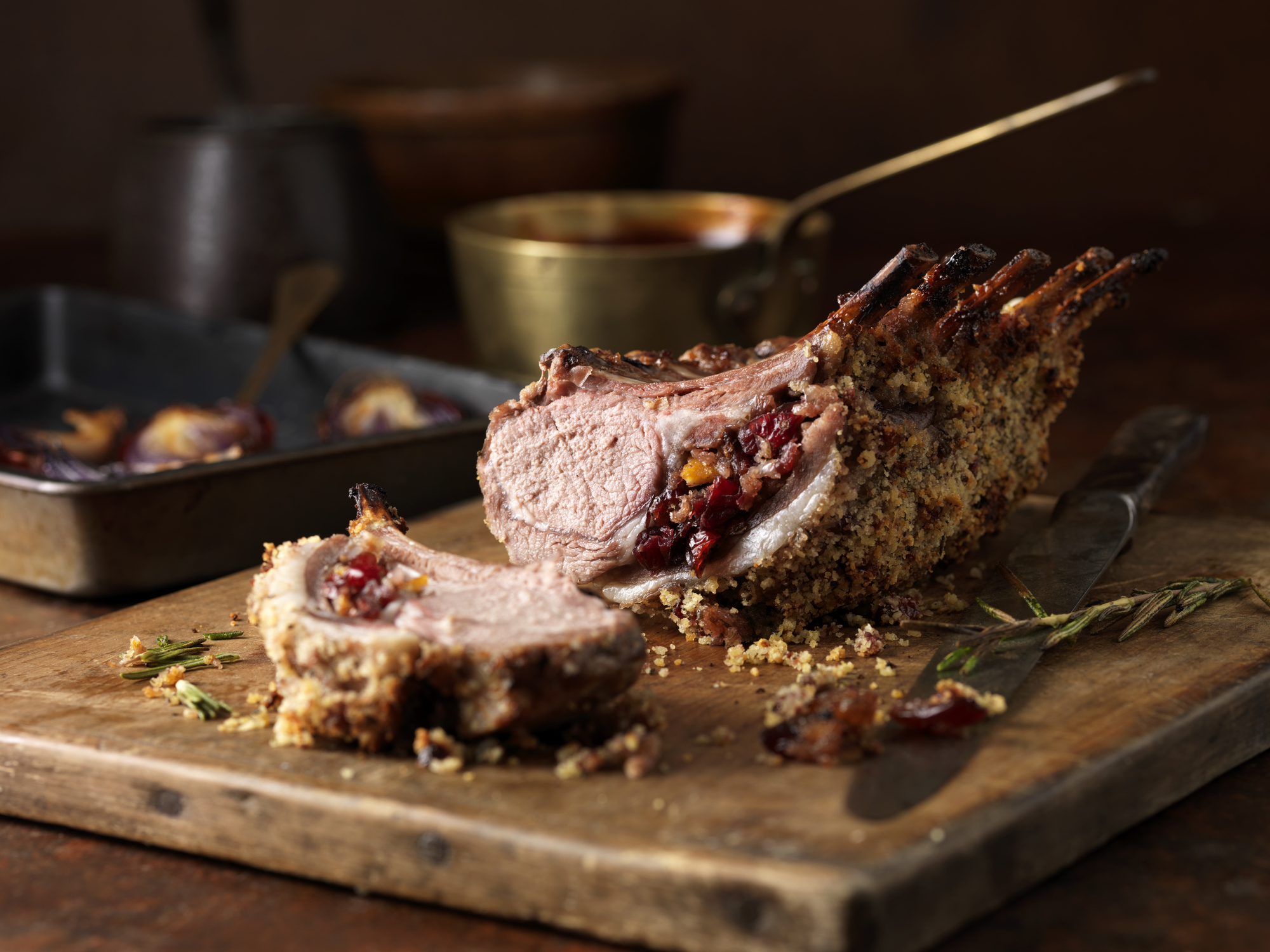
It's more associated with an Easter roast, but lamb is clearly still a popular meat for the festive season
22. Roast lamb
Why so popular? More traditionally eaten at Easter, it would appear a lot of you are rule breakers on the festive meat front, fancying a spot of lamb as the main attraction. And we understand why. It’s arguably the tastiest of all roasts, and could also be served alongside other roast meats if you have a particularly carnivorous clan. It could also be made into a Boxing Day dish, should there be any left behind – a slice of lamb, rosemary and garlic pie would be a very welcome addition to the buffet if you ask us.
How to serve: As it’s Christmas, push the boat out with a whole leg if you’re feeding the hordes, or how about slow-cooking some lamb shanks in a lightly spiced sauce until they fall away from the bone? Another option that feels a wee bit special is a rack of lamb, served at the table and surrounded by all the usual trimmings. Don’t forget the mint sauce.
Get the recipe: Roast lamb recipes

Christmas chutney is a very popular condiment for that cheeseboard and cold cut selection
23. Chutney
Why so popular? Quite right too. It wouldn’t be Christmas without a good chutney on the table, pairing marvellously with your cheese selection and your cold meats. And the options are plenty. Try a tomato and chilli chutney with a spicy edge, a fruit plum chutney, a festive cranberry chutney, or even a seasonal beetroot chutney, great to make if you’ve got leftovers from your veg box. And then there’s an actual Christmas chutney, including cinnamon, cloves and ginger.
How to serve: Making your own chutney is a very satisfying endeavour, and you can give it away as gifts, as well as keeping a pot for your festive table. Store it and serve it in Kilner jars, decorated with festive ribbon and pop a cinnamon stick in when serving, on a platter surrounded by a cracker selection, hunks of bread, your favourite cheeses, some cold cuts, and olives and pickles.
Get the recipe: Chutney recipes
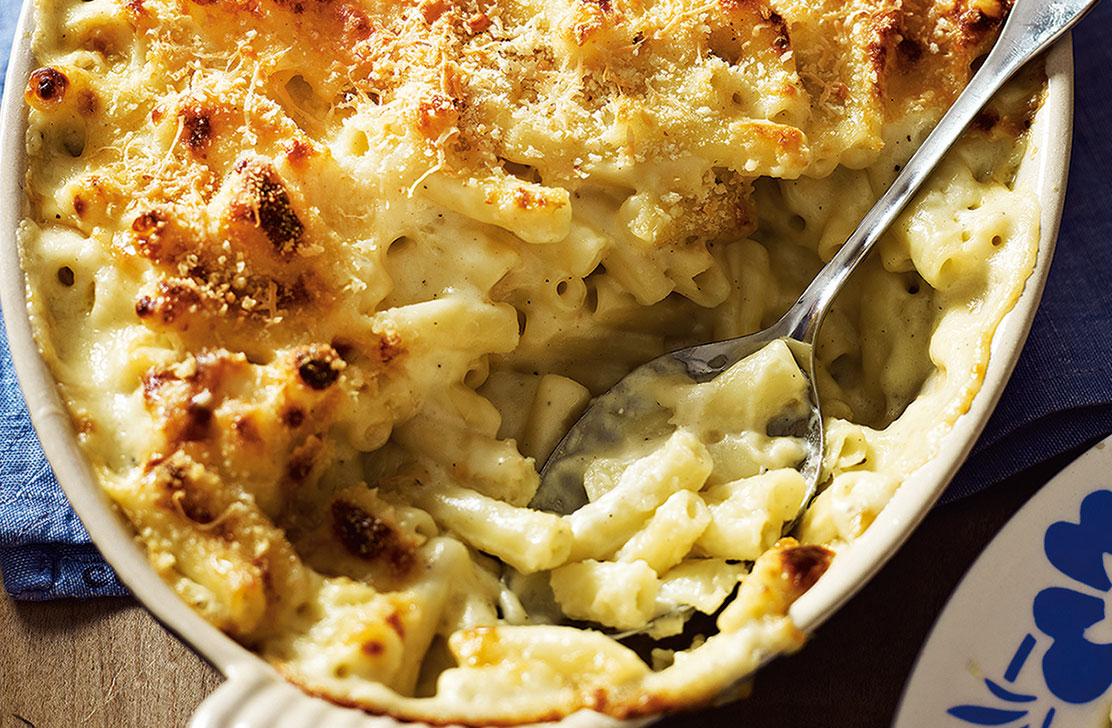
Add a crowd-pleasing mac and cheese to your buffet, or even include as part of your roast, because why not?
24. Cheese sauce
Why so popular? Well, who doesn’t love a good cheese sauce? It’s perfect to drizzle over veggies, and a big batch means it’s there for those days over the Christmas period when you frankly can’t be bothered to cook, so it can be poured over macaroni or take a lot of the graft out of putting together a lasagne.
How to serve: As it’s Christmas, why not throw some blue cheese in the mix? It’s a great use for any leftover Stilton, gorgonzola, or Danish blue. Strong cheeses like Parmesan work a treat too. Pop a jug of it on the dinner table for anyone who doesn’t like gravy (who are these people?) or as an additional sauce. Just don’t muddle it with the bread sauce.
Get the recipe: Cheese sauce
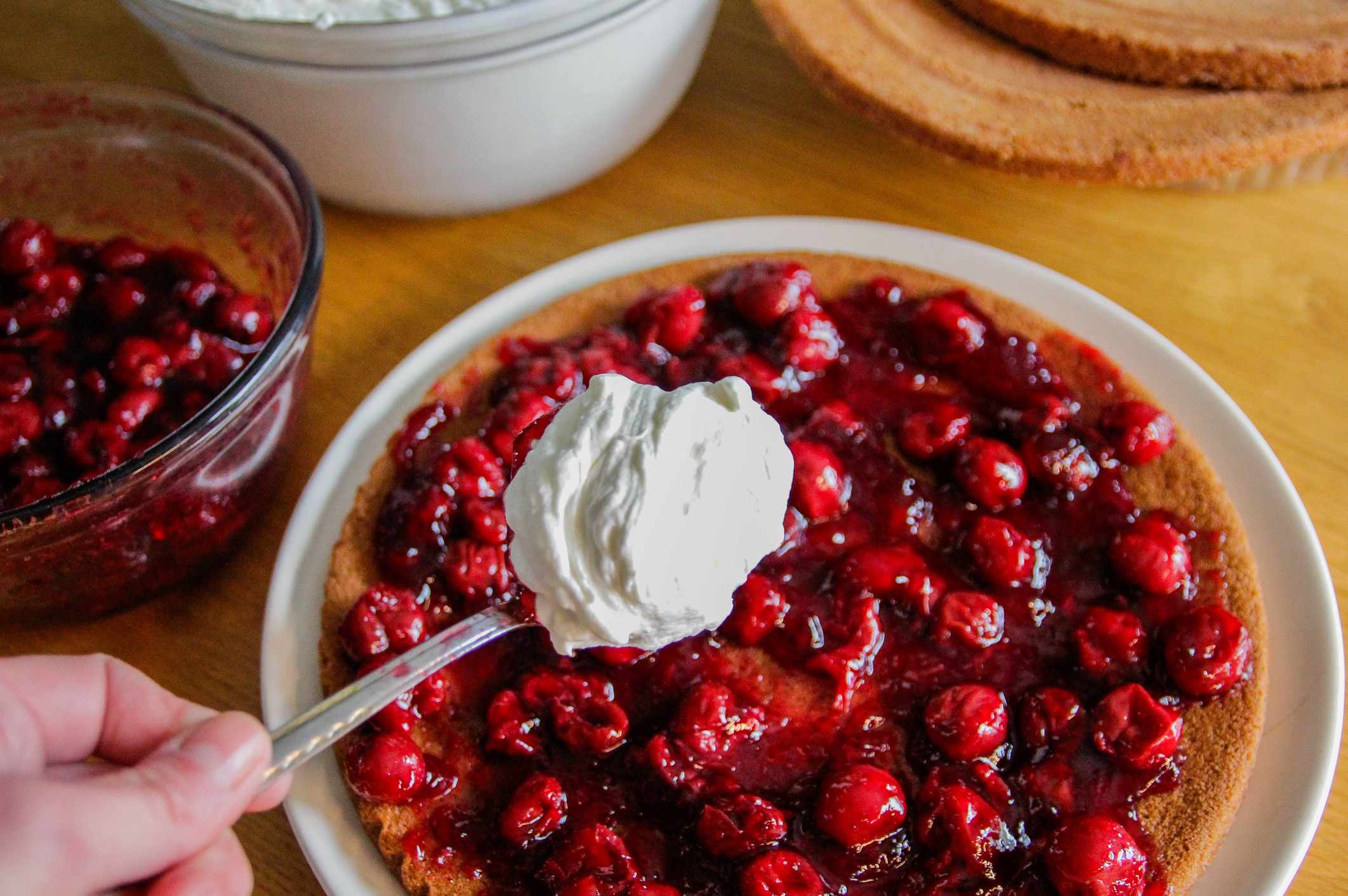
Berries are a versatile fruity addition to lots of festive desserts and drinks
25. Berries
Why so popular? “Berries are light and their acidity as well as sweetness is great when you are having rich foods,” says Caroline Hartley. “Prep some to serve throughout the day for breakfast, with a creamy pudding, or as part of a buffet.” They’re ever so versatile and can be added to drinks, desserts, the top of Christmas pudding, and as a lighter breakfast when the food onslaught gets a bit overwhelming. As they’re not especially in season right now, get a bag of frozen berries to dip into when needed
How to serve: Their festive hues make berries a good addition to a winter cocktail, like our berry caipiroska, a vodka-based Brazilian cocktail that is a twist on a caipirinha. You can also add them to a classic sherry trifle or use them to top a cheesecake.
Get the recipe: Berry caipiroska cocktail
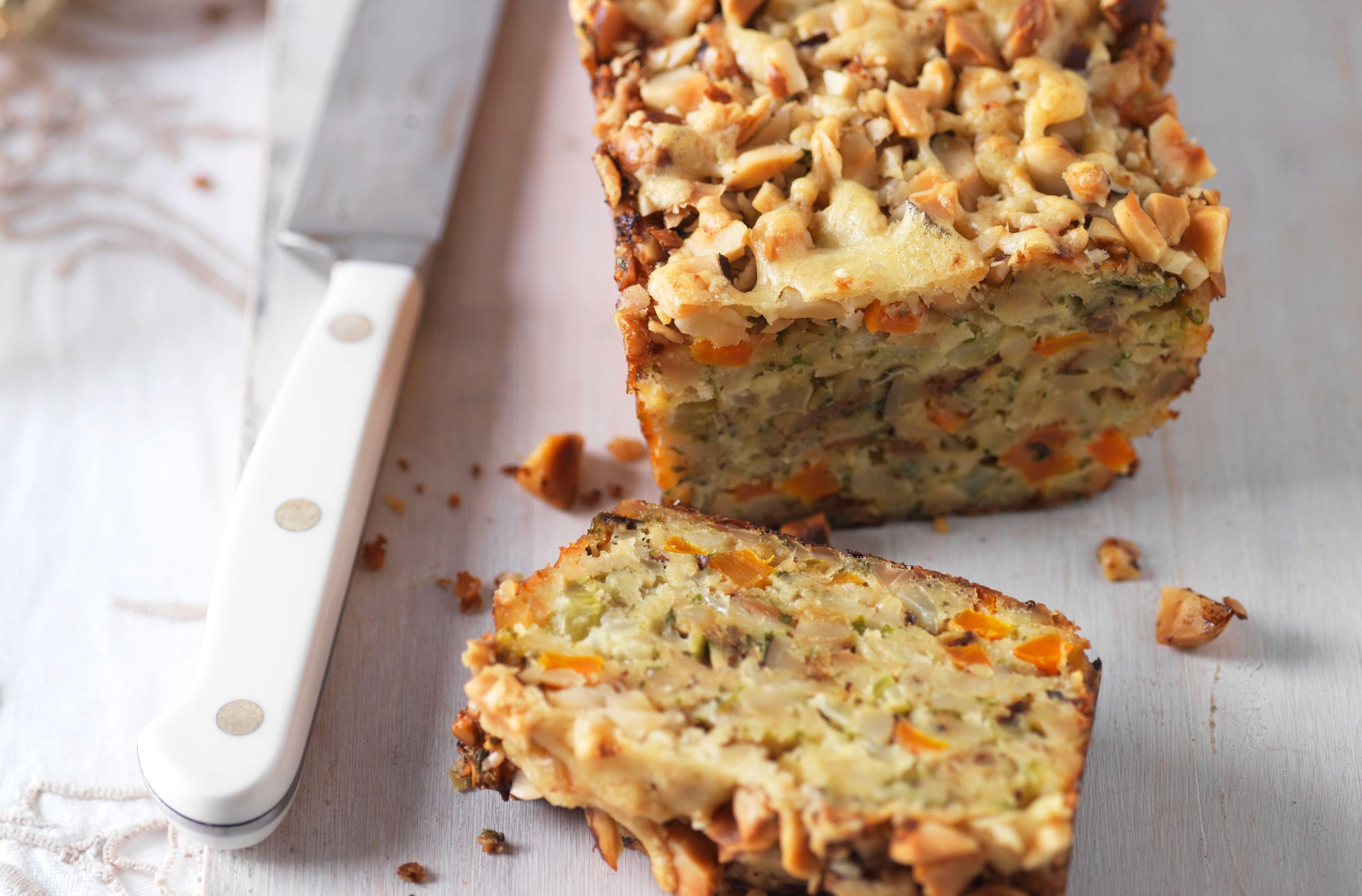
Mary Berry's veggie centrepiece is a triumph for those who don't wish to have a meat-based feast
26. Nut roast
Why so popular? The most classic of vegetarian centerpieces for Christmas day, many of us are turning to the nut roast to reduce our meat consumption. Packed with flavour from chestnuts, pistachios, and other festive faves like Brazil nuts, it’s a protein-packed feast that works wonderfully with roast veggies.
How to serve: Serve it at the table, topped with some brightly coloured herbs - basil works well - and surrounded by veggies. It simply must be served with a big jug of hearty vegetarian gravy.
Get the recipe: Mary Berry's nut roast or try our Brazil nut roast pictured above.
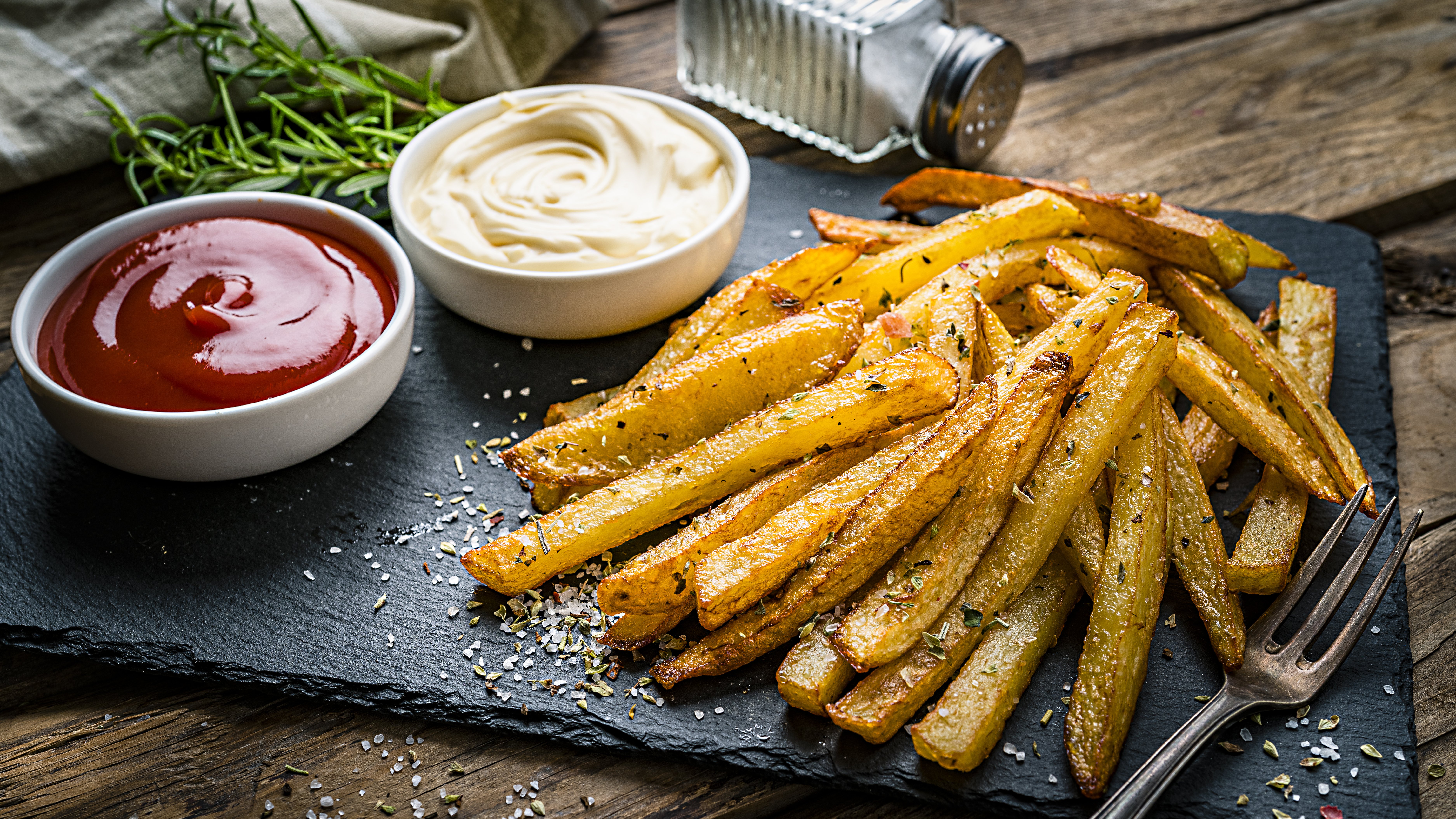
It's Christmas, if you want chips, have chips, we say
27. Chips
Why so popular? Controversial indeed. Many would argue that fries, wedges, or chips by any other name have no place at the Christmas dinner table, but you lot seem to think otherwise. And Caroline Hartley is a strong agree. “If chips are your thing, then go for it on the big day! No one is judging and if it puts a smile on your face then that is all that matters! Treat yourself with some triple-cooked chips if you want to feel special,” she says.
How to serve: If you’re going for it, serve up a big bowl of home-cooked fries, as an alternative to your other potato offerings. Just don’t put them near the kids or they might not eat anything else. Sprinkle them with rosemary salt in a nod to festivities.
Get the recipe: Homemade chips
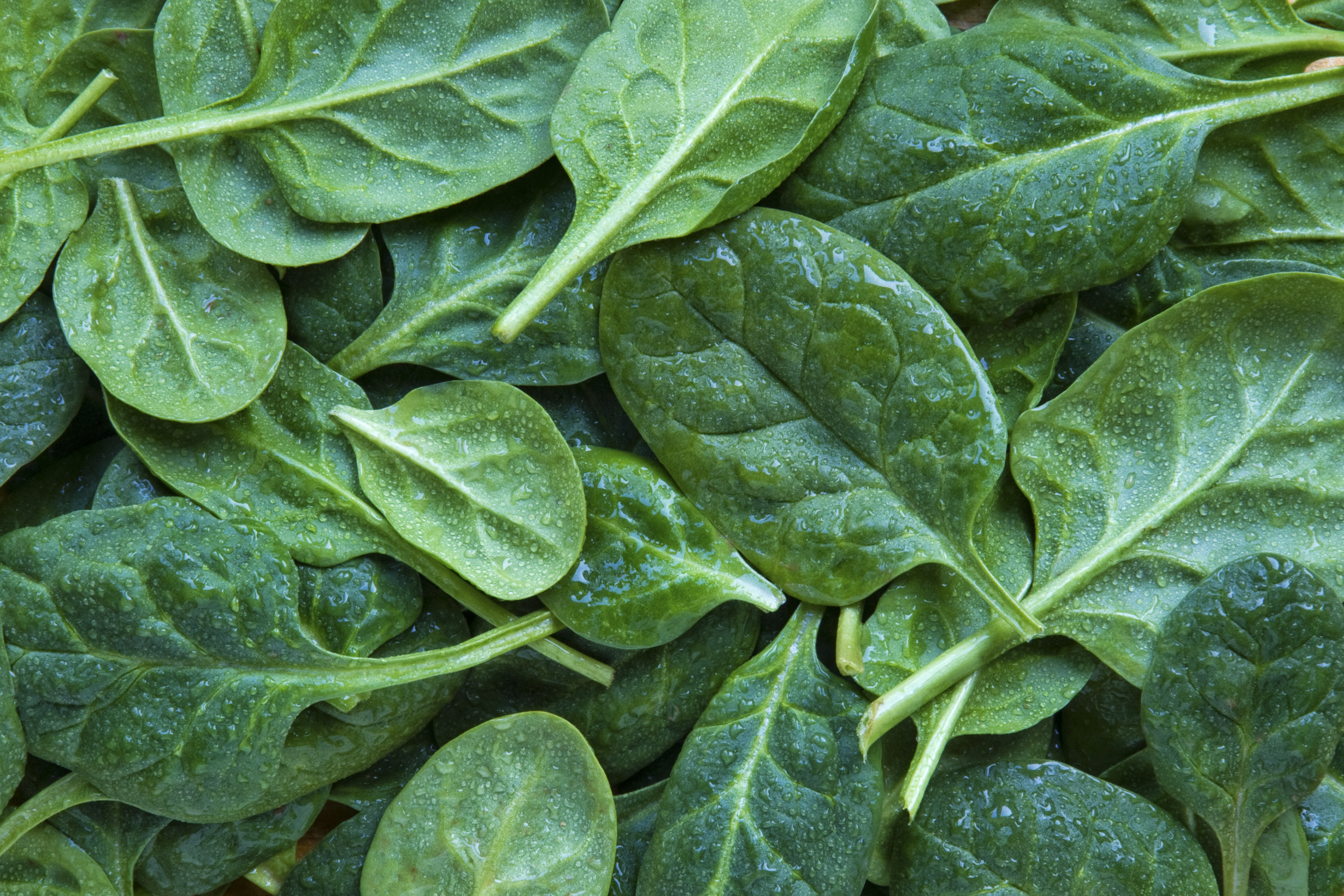
Add to winter salads, make eggs florentine for brunch, or include in a quiche for your Boxing Day buffet
28. Spinach
Why so popular? The staple of Christmas veggies, there’s no reason not to have a big bowl of steamed spinach on the table. It works particularly well with lamb or with veggie options like a nut roast. It’s also a great one to begin the day so that you can at least start things off with some good nutrients in your system. “Spinach is so brilliant to have on standby with eggs for breakfast or as part of a leaf salad and it has loads of nutrients to help balance that box of chocolates! “ says Caroline Hartley.
How to serve: Serve it topped with a knob of nutmeg butter as part of the festive feast, or prep some eggs florentine for a Christmas Day or Boxing Day breakfast. Put together a spinach salad to throw into the mix on a buffet too, or add some to a quiche alongside some blue cheese and pancetta.
Get the recipe: Spinach recipes
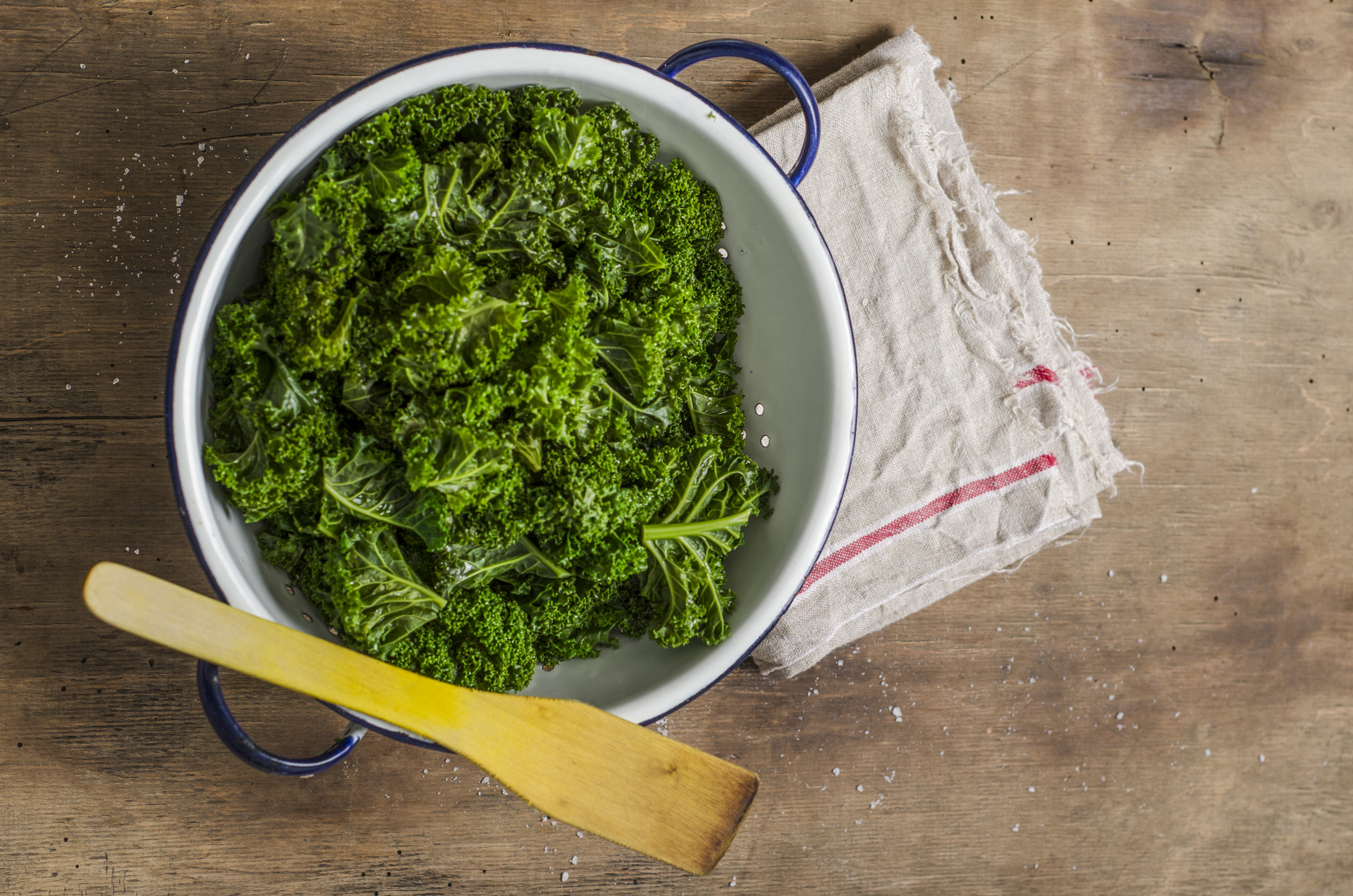
Kale can be added to stuffing, or served as a veggie side dish alongside sprouts and chestnuts
29. Kale
Why so popular? Even more unlikely than spinach on the list, we’re clearly becoming a health-conscious lot and choosing to add a veg that’s become popular in recent times for its high nutritional content into the Christmas dinner mix.
How to serve: Kale is a great one to throw in with your sprouts and chestnuts as a veggie side dish, and it can even be an ingredient in a festive stuffing or stirred into your cauli cheese. Try it fried up for breakfast and topped with poached eggs, too.
Get the recipe: Kale recipes
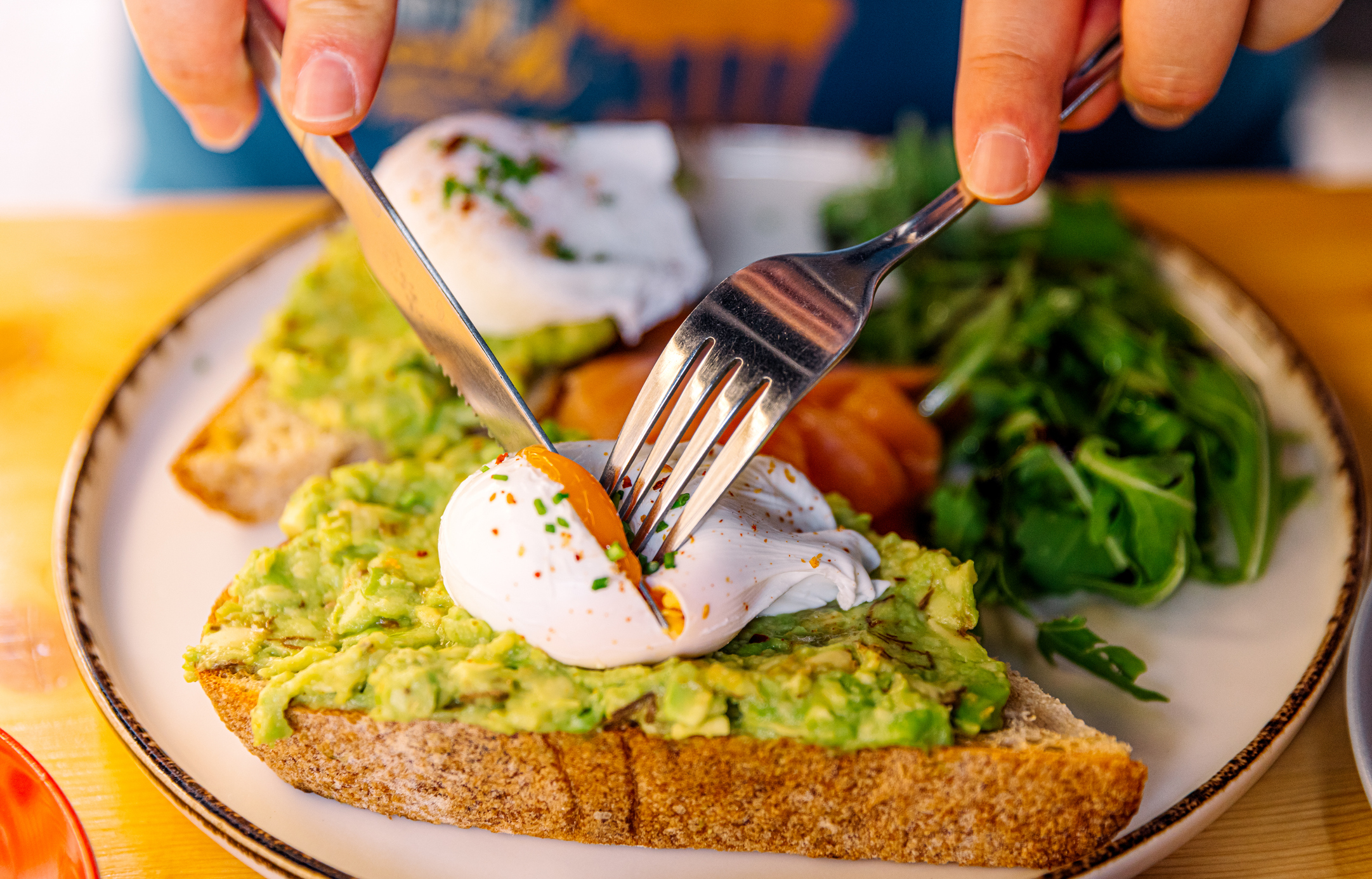
30. Avocado
Why so popular? Well, we’ve all fallen in love with avocados in recent years, whether it's spread on toast for brekkie, or in salads. And while they don’t particularly have a place on a traditional Christmas day feast table, we’re all for breaking the rules. They’re excellent as part of a starter, or on the Boxing Day breakfast table.
How to serve: Go retro by making your avo a boat on which to top a prawn cocktail for your starter, or smash them on sourdough toast and top with chilli flakes and a poached egg for Christmas day breakfast. They pair well with blue cheese too, and a creamy guac would go down well on any buffet table, especially with leftover roast turkey or chicken.
Get the recipe: Avocado recipes
Most hated Christmas foods
And for those of you wondering what Christmas foods get the thumbs down come Christmas time. We give you the list of the most hated Christmas foods - not sure we agree on a few of them (mince pies are certainly a favourite in our eyes, as is mulled wine... not sure about the eggnog though!)
- Eggnog
- Christmas pudding
- Mulled wine
- Nut roast
- Brussels sprouts
- Brandy butter
- Christmas cake
- Mince pies
- Cranberry sauce
- Parsnips
- Trifle
- Turkey
What do Brits eat for Christmas dinner?
Turkey reigns as the UK’s favourite Christmas dinner centerpiece with 54% of us opting for this as our meat choice, while around 22% of us go for roast beef or roast chicken, according to a survey by Currys. This is accompanied by roast potatoes (and often another variety, such as mash or even potato dauphinoise), and vegetables, most typically including parsnips, carrots, sprouts, and red cabbage. Other sides include bread sauce, cranberry sauce, stuffing, and pigs in blankets (mini sausages wrapped in bacon) – and let's not forget the all-essential gravy.
There's no one traditional starter to the meal, but lighter offerings such as smoked salmon and prawns are popular, as is pâté and toast. The most popular dessert for Christmas dinner among Brits is plum pudding, served with brandy cream, ice cream, or even custard, depending on your tastes.
What is the most Christmassy food?
Turkey is the most popular Christmassy meat. Roast potatoes are our top trimming, closely followed by carrots, then the all-important gravy, pigs in blankets, and stuffing.
Plum pudding is the most Christmassy dessert. Other sweet treats that are hugely Christmassy are mince pies, Christmas cake, and the all-essential festive chocs – it wouldn't be December without a large tin of Quality Street on the go. And let's not forget the all-important cheese board, including a big hunk of Stilton and a truckle of finest cheddar, as well as chutney and crackers.
Why do we eat turkey at Christmas?
We've got King Henry VIII to thank for that. He swapped his traditional goose for a turkey one Christmas and his loyal subjects followed en masse. Turkeys are not native birds – they were first brought to the UK in the early 16th century. They were very popular during Victorian times, when many of our modern Christmas traditions were formed – and, now, we buy around 10 million of them every Christmas. Their size is also likely to be part of their popular appeal – feeding far more than the humble chicken on a day when many people's dinner tables swell in numbers.
Why are Brussels sprouts so popular at Christmas?
It's largely down to seasonality – sprouts are in their prime at the same time we celebrate Christmas. There's also another matter of timing that could explain why they are an essential part of our festive feasts – they became widely available in this country towards the end of the 1800s, which coincides with the time that our modern ideas of how we celebrate Christmas first came about.
There's no one definitive answer, but one thing is certain – despite them being the most 'Marmite' of vegetables, in the UK we eat more sprouts than in any other European nation. In fact, the British sprout industry is worth a whopping £650 million.
To help you prepare for your festive feast, follow our step-by-step guide on everything you need to know about Christmas dinner timings. If you need help with cooking your bird, you will need to work out how to calculate turkey cooking timings - and don't panic if you're feeling disorganised and haven't done your traditional bakes yet – because we can even show you how to make a Christmas cake in an air fryer which will save you a bit of time.
Video of the Week

Lara Kilner is a writer and editor with two decades of experience in national newspapers, magazines, and websites. She writes about food, lifestyle, travel, health and wellness, and entertainment, and regularly interviews celebrities and people with interesting life stories and experiences. Her foodie content has included interviews with Jamie Oliver, Rick Stein, Queer Eye’s food expert Antoni Porowski, the Hairy Bikers, Hugh Fearnley Whittingstall, Raymond Blanc, Andi Oliver, Paul Hollywood, Prue Leith, and Nadiya Hussain.
-
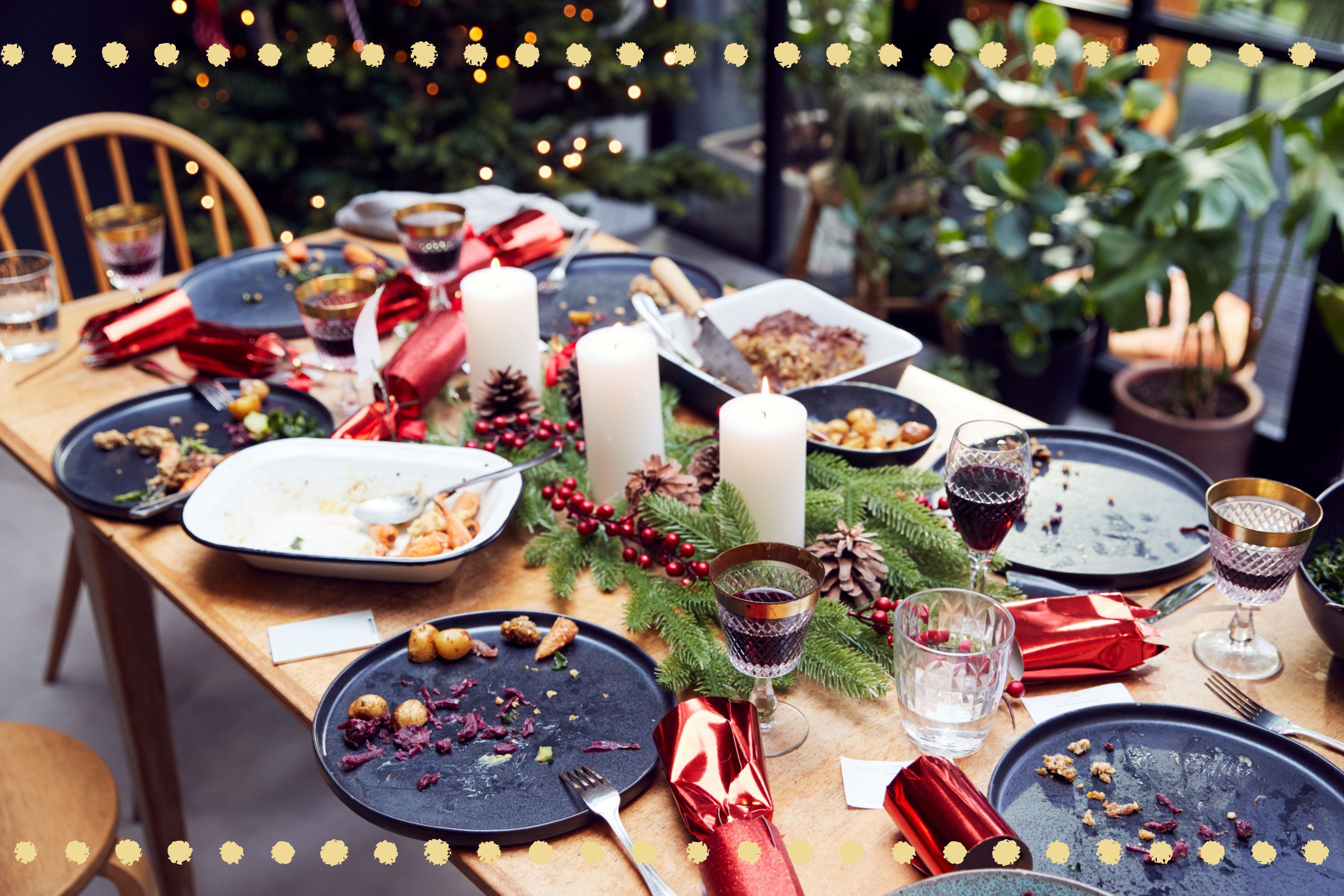 6 surprising ways I’ll be using my Christmas leftovers this year - and #3 is spot on for Boxing Day
6 surprising ways I’ll be using my Christmas leftovers this year - and #3 is spot on for Boxing DayI'm a Food Writer, and this is how I make the most of my Christmas leftovers, from excess turkey to cold veggies...
By Lara Kilner Published
-
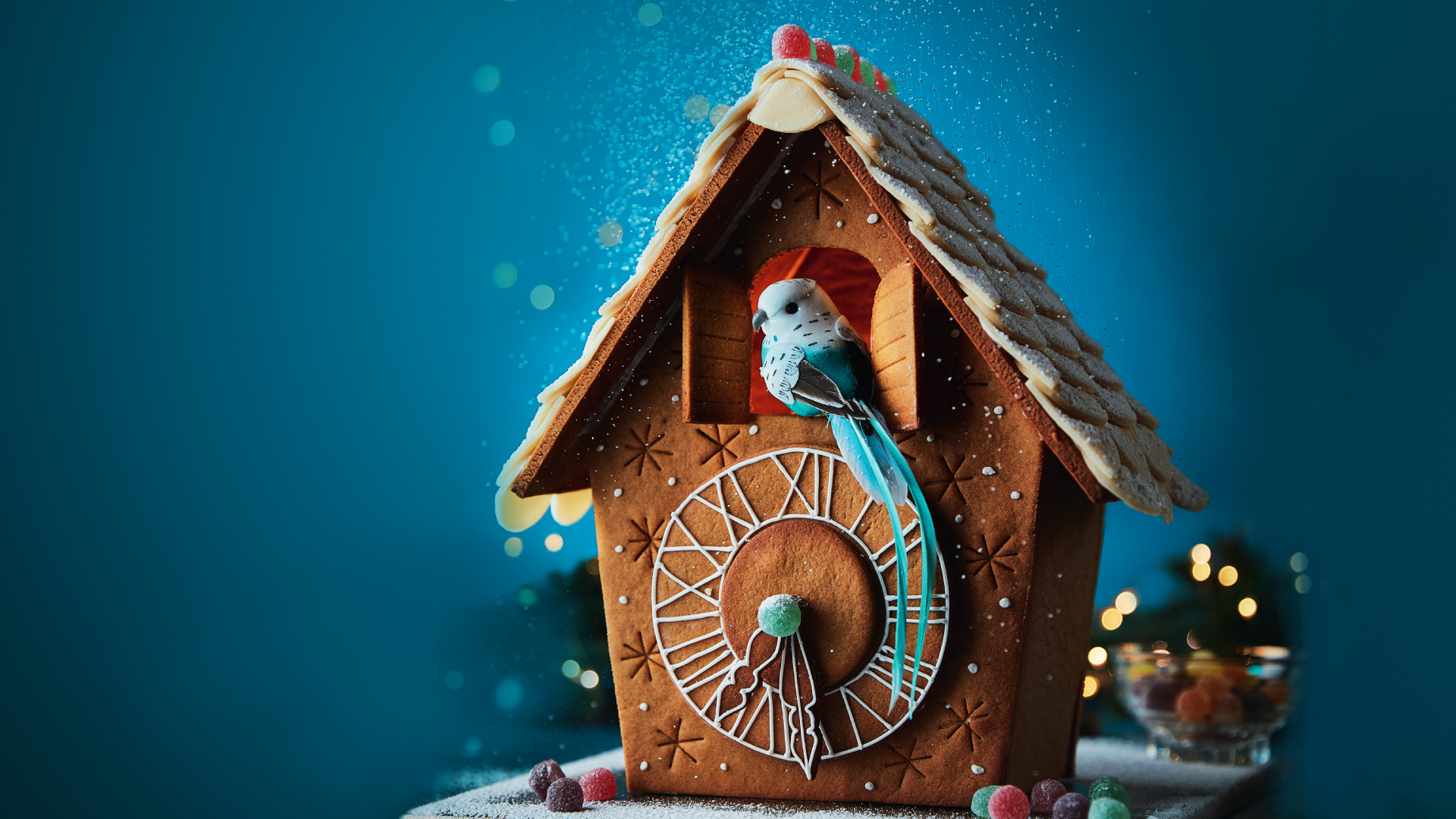 Gingerbread cuckoo clock
Gingerbread cuckoo clockA festive project that doubles as a decoration with the ultimate wow factor!
By Rose Fooks Published
-
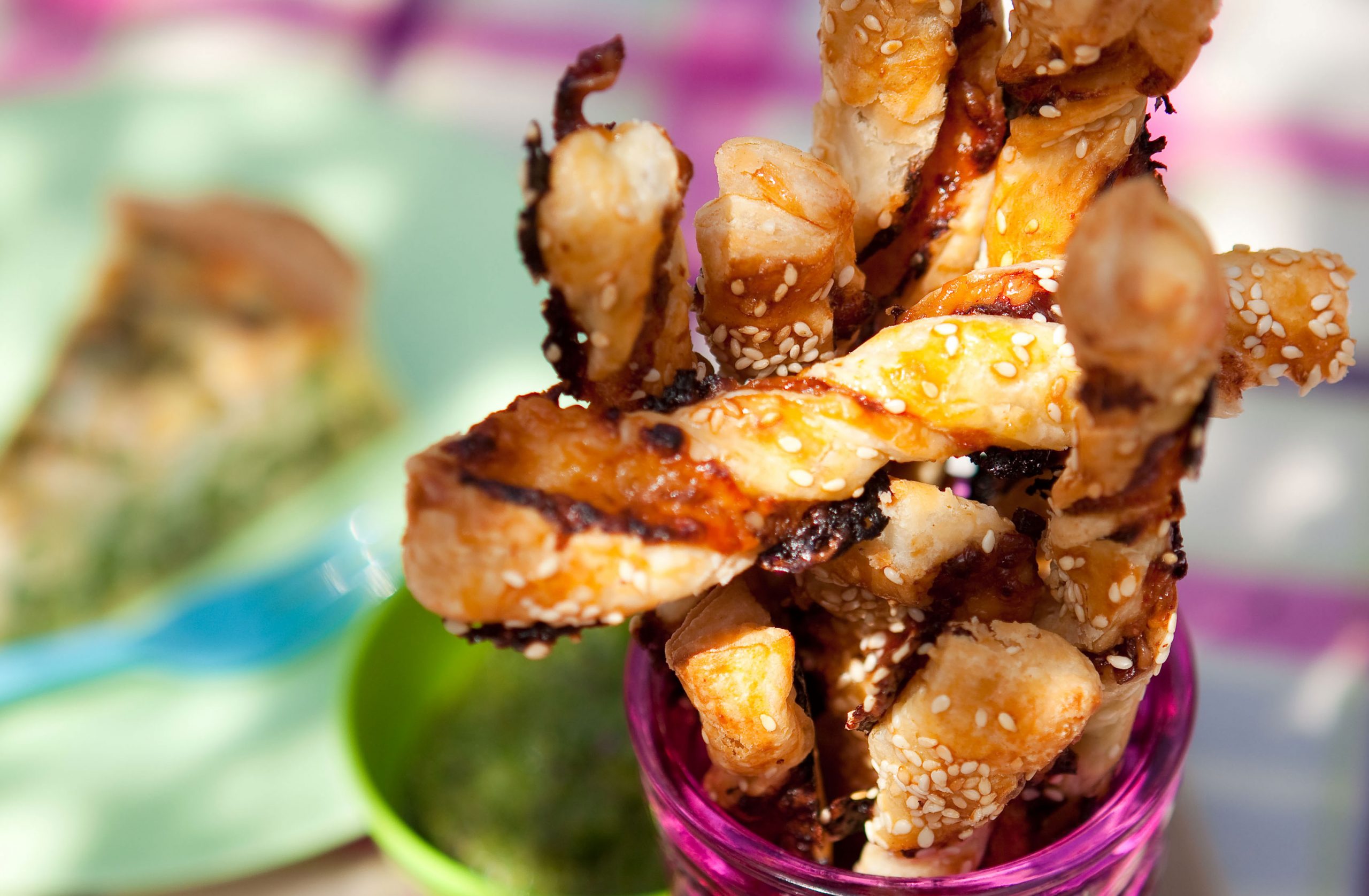 Cheese and pickle straws
Cheese and pickle strawsThis cheese and pickle straws takes a simple party staple and ramps it up a level by adding a twist of tangy pickle to the mix.
By Octavia Lillywhite Published
-
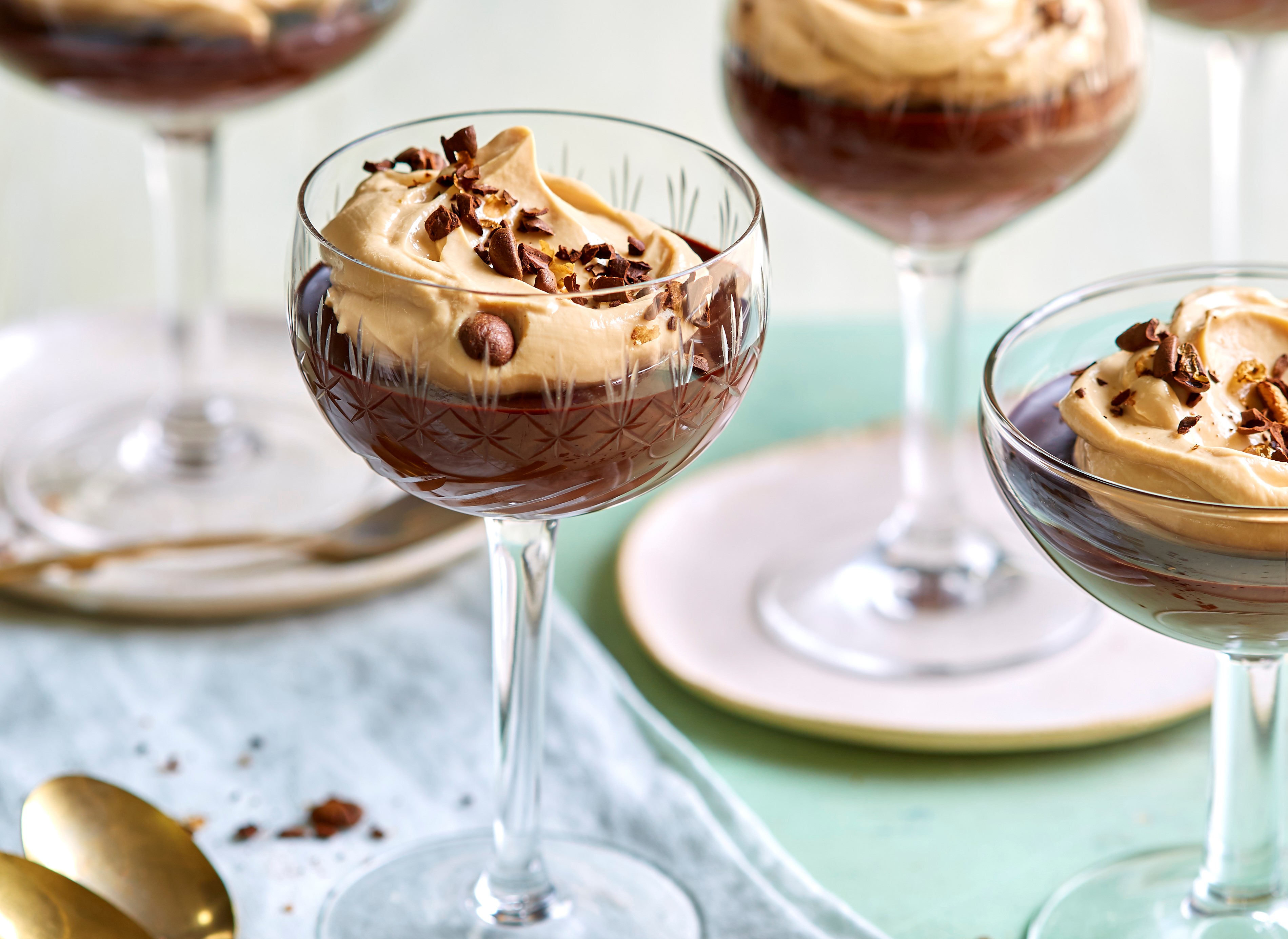 Espresso Martini chocolate pots
Espresso Martini chocolate potsWhizz these Espresso Martini chocolate pots up in 10 minutes for your dinner party – a perfect, lightly boozy dessert...
By Jess Meyer Published
-
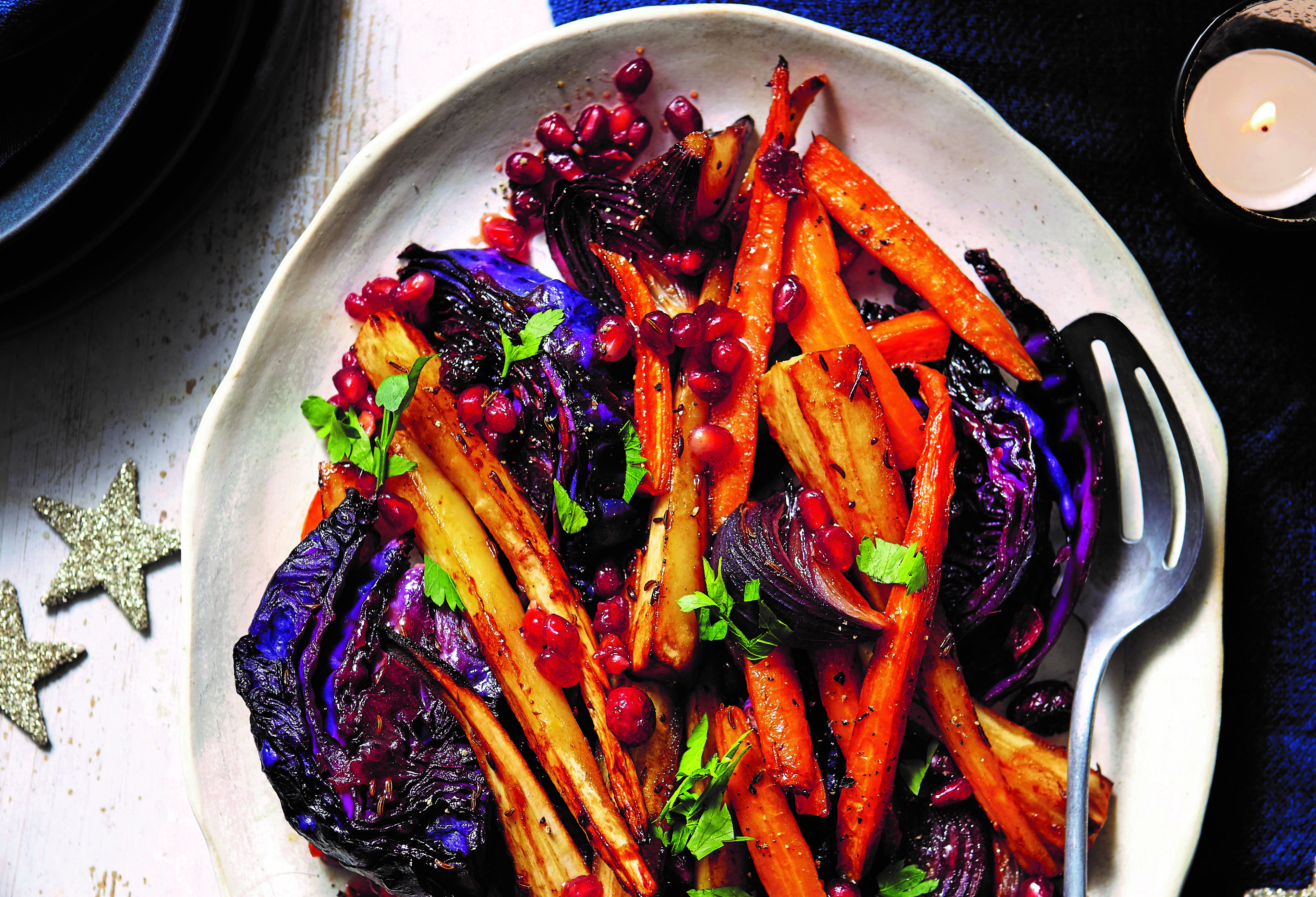 Roast red cabbage, carrots and parsnips with cranberry glaze
Roast red cabbage, carrots and parsnips with cranberry glazeOur cranberry glaze adds gloss and sweetness and elevates roast veg to something truly special...
By Jess Meyer Published
-
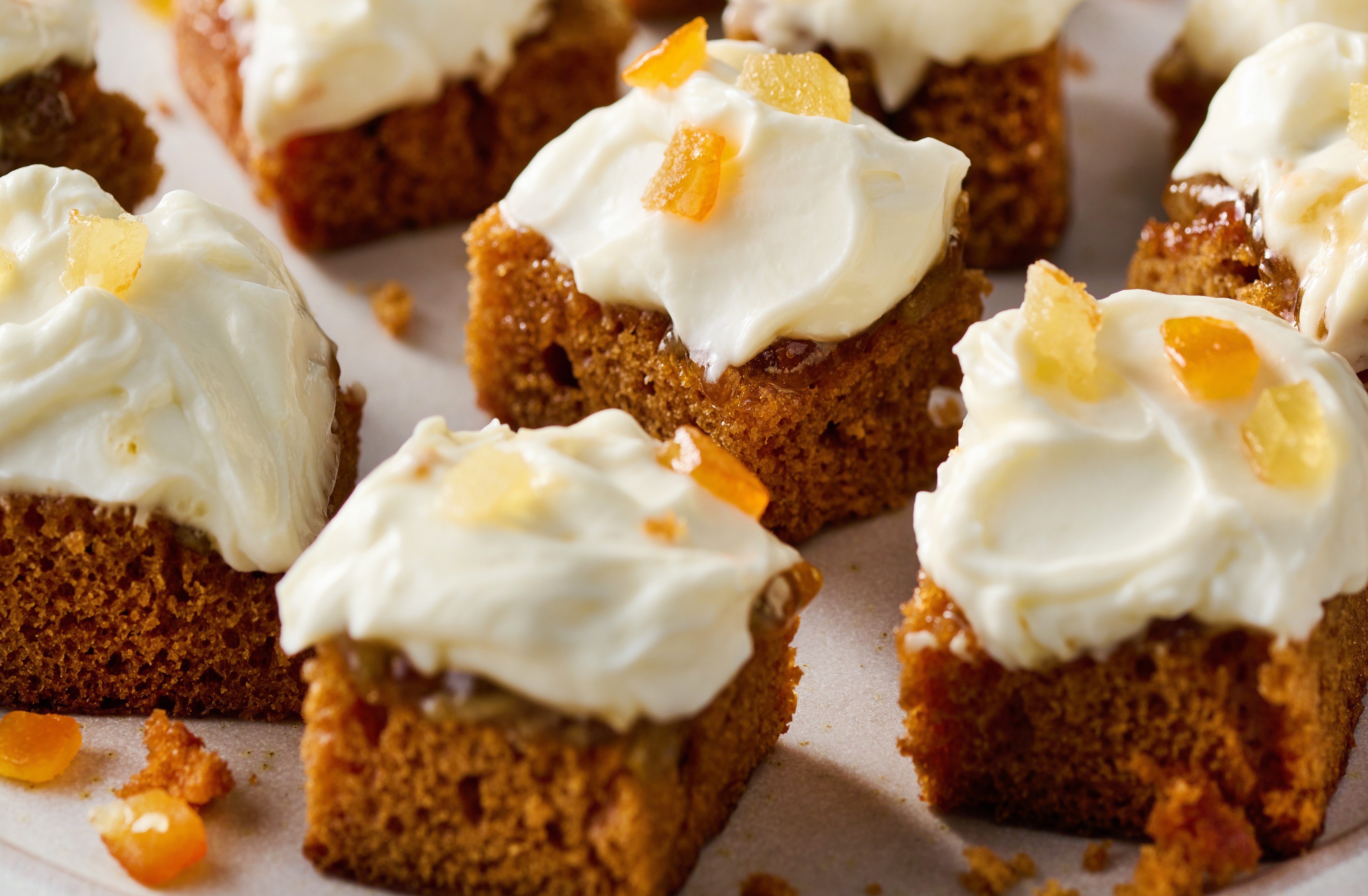 Mini gingerbread cakes
Mini gingerbread cakesIt takes just 10 mins to make mini gingerbread cakes. Jazz up a shop-bought cake with frosting, candied peel, and ginger for a delectable nibble...
By Rose Fooks Published
-
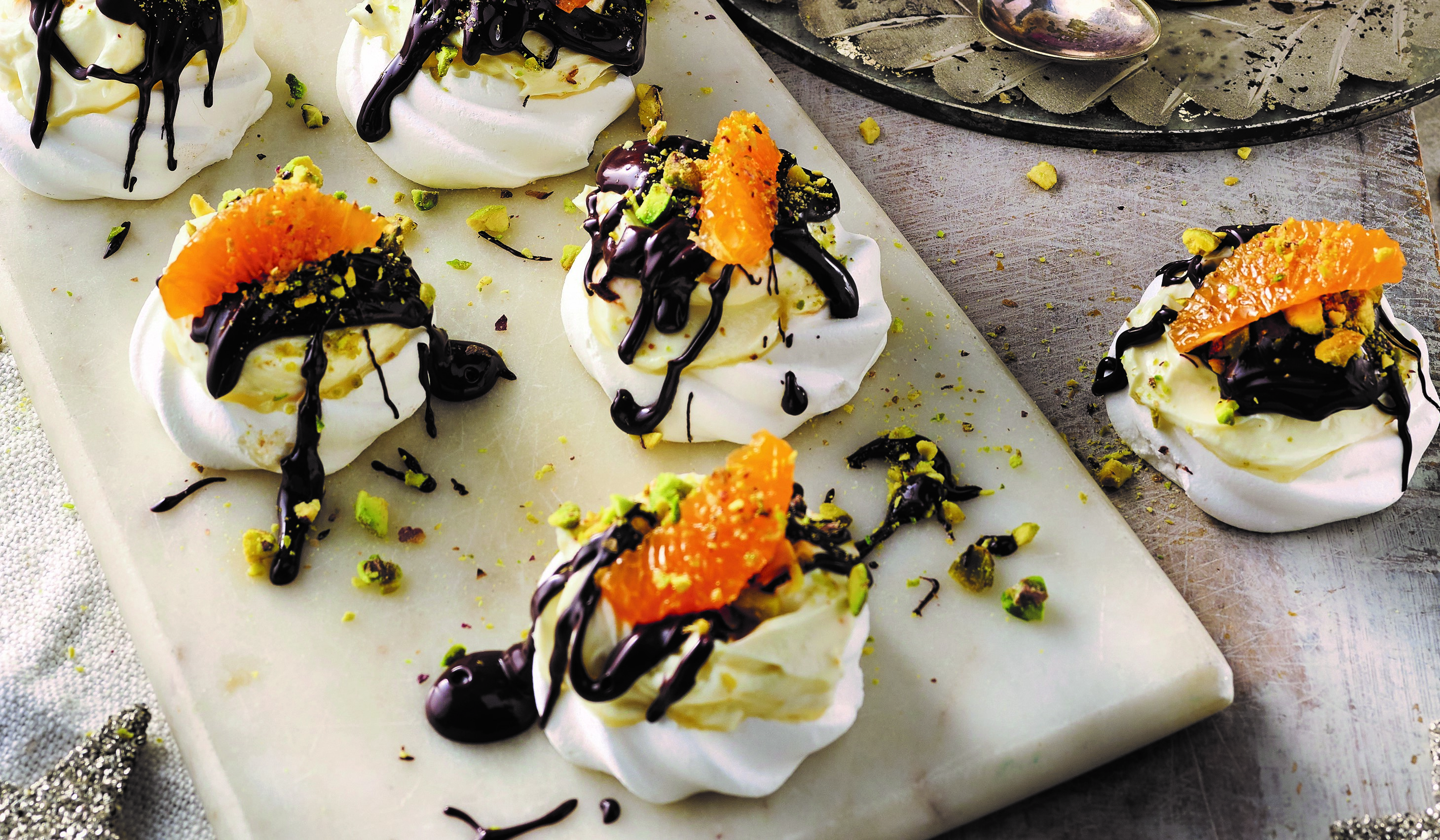 Mini clementine pavlovas
Mini clementine pavlovasWhip up a batch of these deliciously sweet mini clementine pavlovas - these tiny meringues are the ideal way to end your party...
By Rose Fooks Published
-
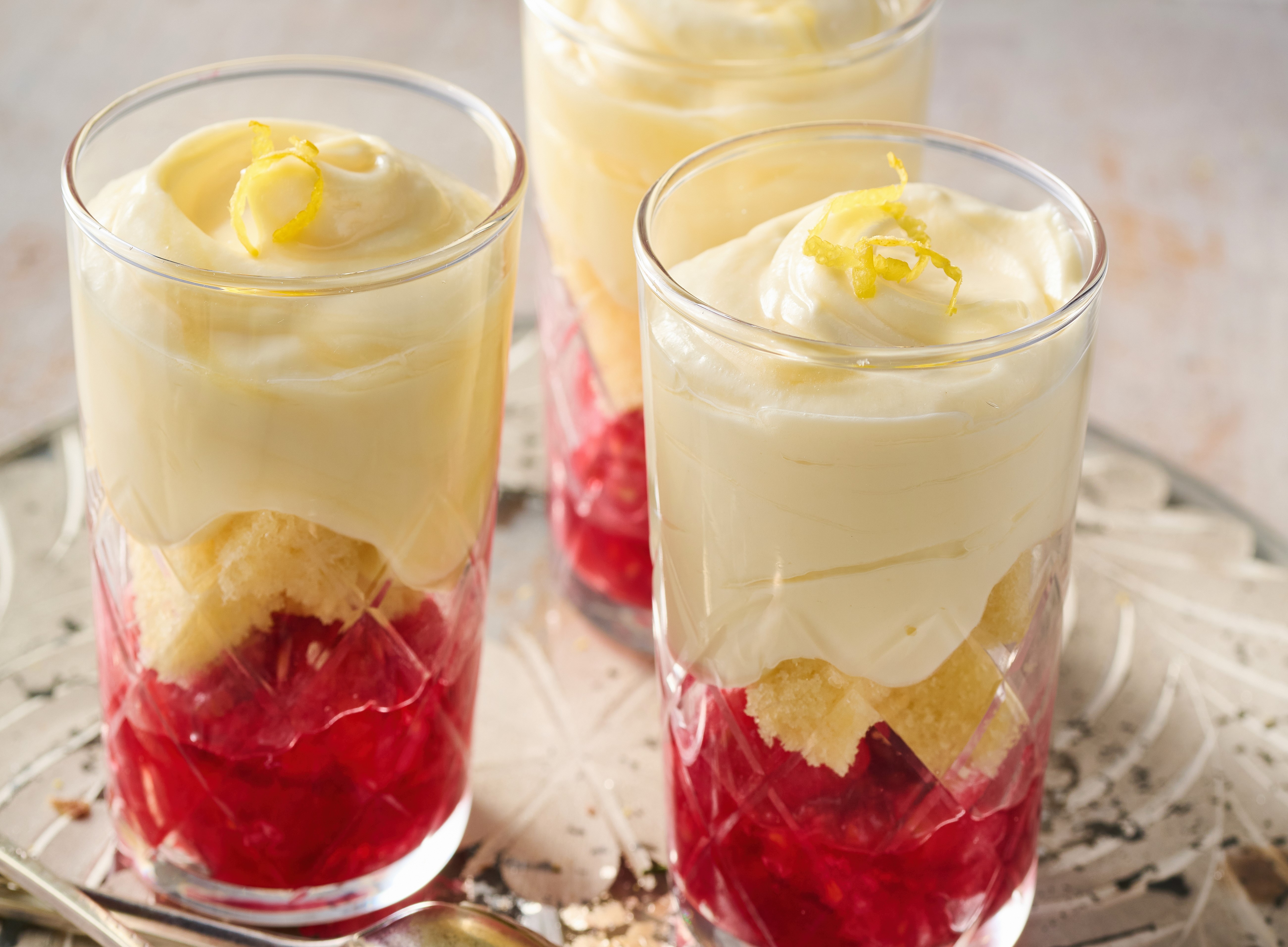 Mini trifle shots
Mini trifle shotsA wonderful sweet canapé, these cute mini trifle shots will be a popular choice – and they’re so easy to make...
By Rose Fooks Published